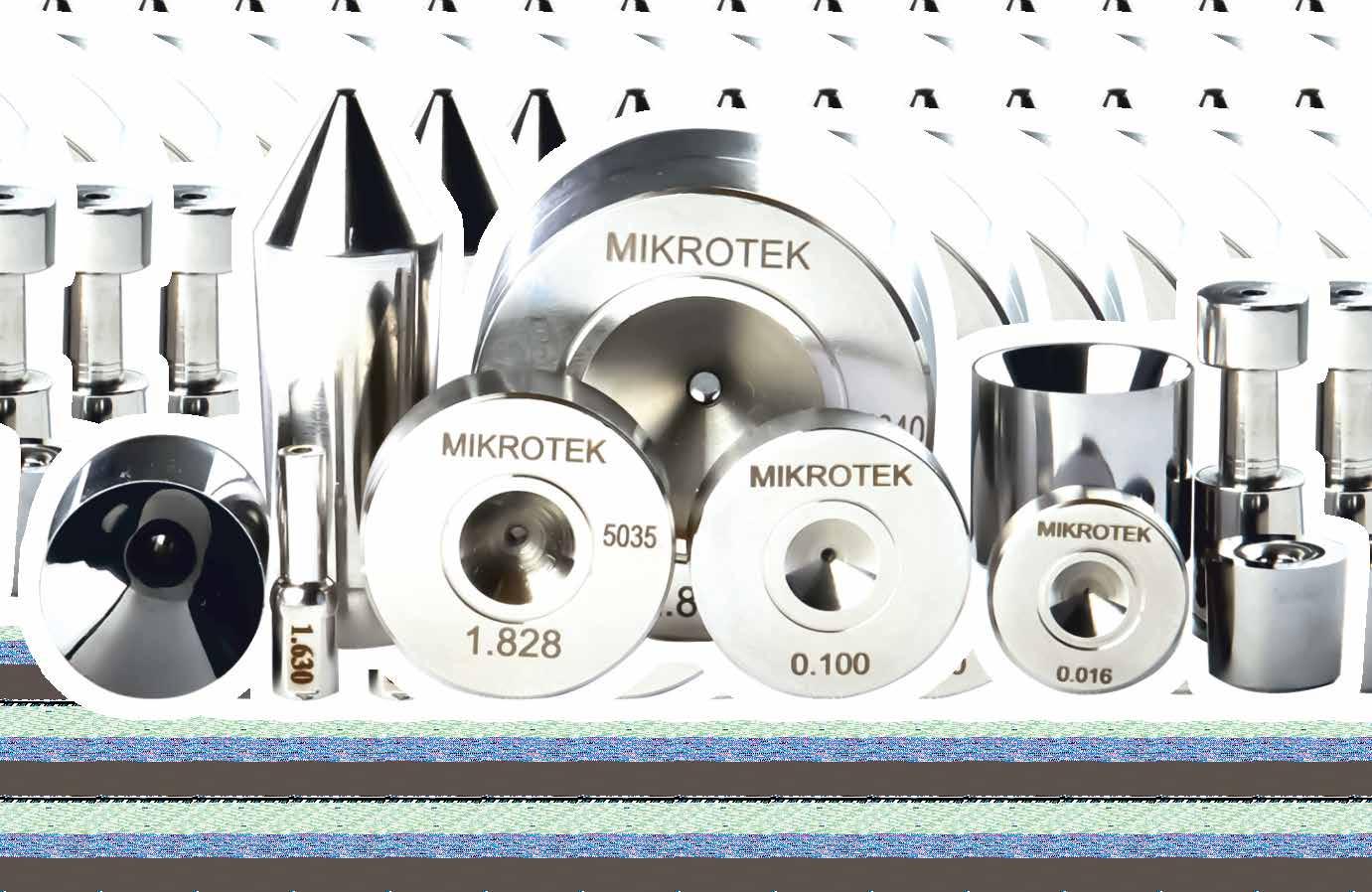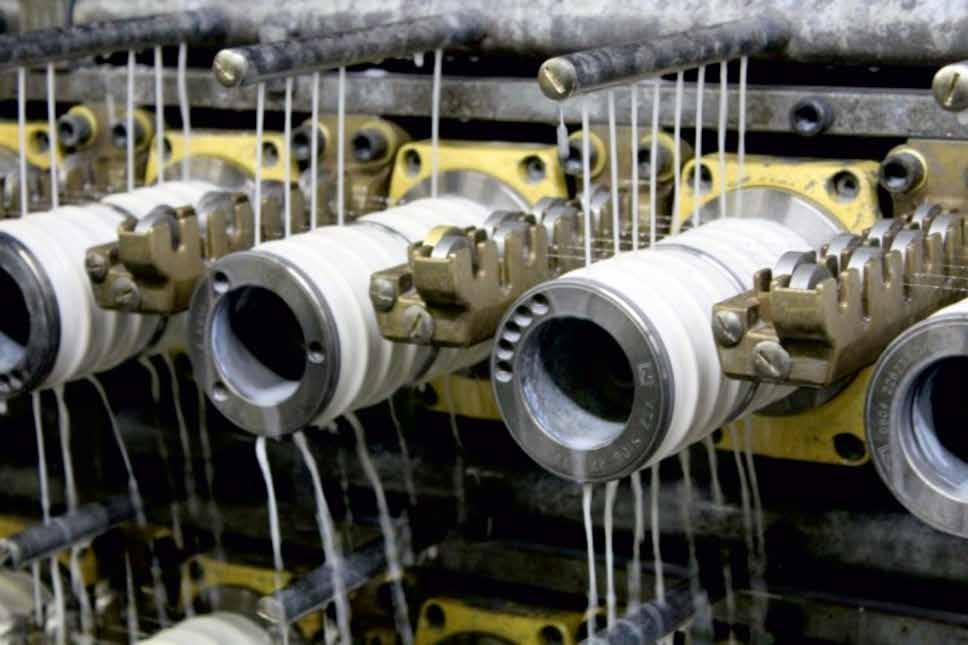DECEMBER 2023

CONNECTING EXPERTISE GLOBALLY







DECEMBER 2023

CONNECTING EXPERTISE GLOBALLY






As we all know, the past few years have been challenging. The world economy has been laid pretty low by Covid and its aftermath and the world is still getting fully back on its feet.
But things are getting better: our businesses are starting to grow new shoots again (and what better metaphor for the time of year?), and for some well-positioned companies, order books are starting to get pretty full.
What it means for the wire and machinery business is that once again the exhibitions circuit is opening up to new regions and customers. Our partners at Messe Düsseldorf enjoyed great success at new exhibitions wire Eurasia in Istanbul and wire Middle East Africa in Cairo, as well as the major shows in China and
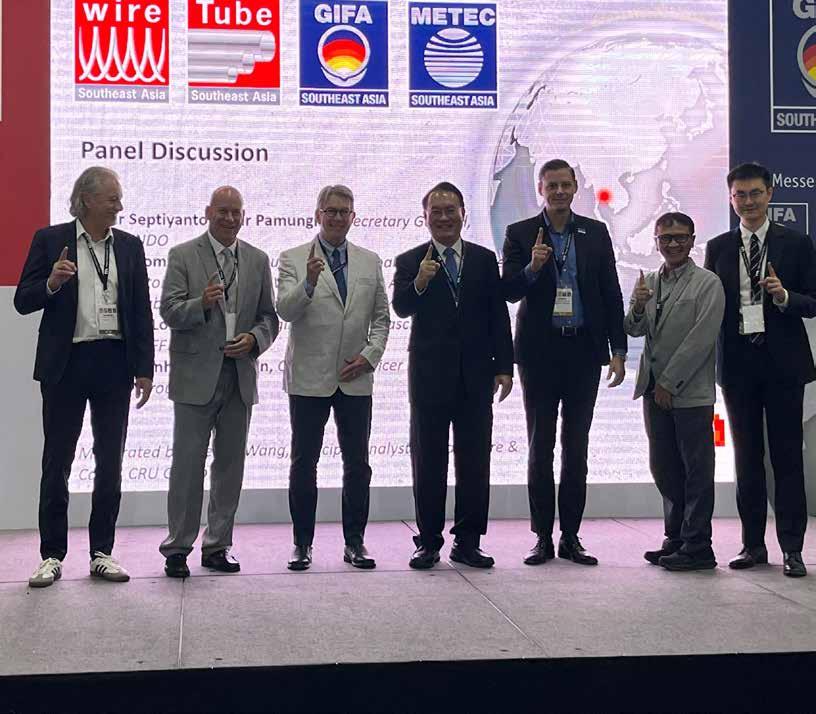
Southeast Asia in September, and hope for big things at the forthcoming wire Mexico in Monterrey, which will be a special pavilion within the country’s longest-established manufacturing trade fair, Expo Manufactura at the end of January.
Next year, of course, we have the big one –wire Düsseldorf; the biggest international exhibition devoted to the wire and cable industry and an absolute must-go for manufacturers and specifiers alike. We at IWMA will be back in force with a full stand and opportunities for member companies to attend that wouldn’t normally be able to do so.
As you can see from what you are reading, IWMA is having a change too: gone is the long-established WCN, which suffered irregular publication following the Covid years, and we start off 2024 with the first edition of IWMA Insider, our new online and print magazine, in which we hope to bring you more
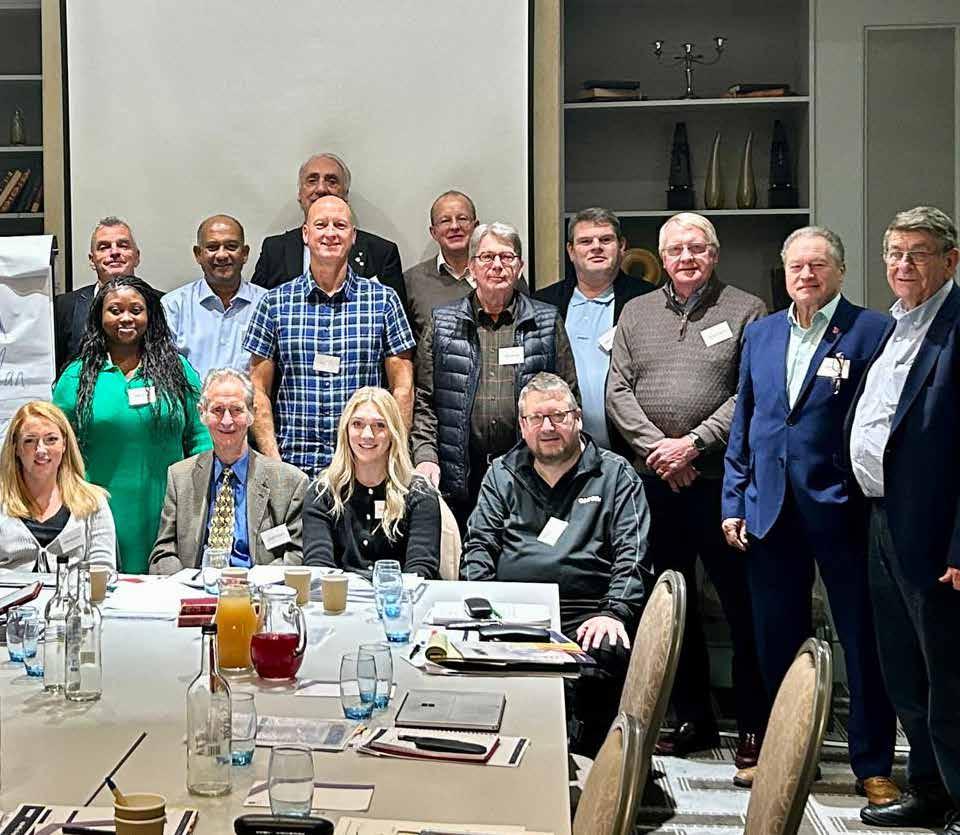
interesting features and news items about people and member-companies and the things they are involved in. There will be plenty of chances to advertise in the magazine in print and online too, with the result seen in the offices of the world’s biggest wire and cable manufacturers and at all the international shows.
We have all seen big readjustments in the way we do business in the past three years and as I said in my message in October, increased costs have finally got to IWMA too, so much so that we have had to raise our membership fees.
You can find out more on our website, but the headline is that this increase is IWMA’s first in 15 years and still brings us in at the lower end of fees charged by similar organisations, none of which have our international reach and membership, so we hope you won’t find the burden too great.
We don’t like having to put up fees, but when we invoice you for your next annual membership fee, which may have already happened, the cost will be £250 – up from £150 - or your local preference in USD or Euro. It’s not a vast increase in business terms, but we must raise the fee to help to keep IWMA running smoothly on your behalf. The fee is set in GBP before the application of local sales taxes (such as VAT for members in the UK).
We’ve also had a change of personnel on IWMA’s team. After 11 years as Executive Manager, Andy Lewis has moved on to a new challenge with IWMA member Metalube. Taking over from him, as Executive Manager, is our former Marketing Manager, Jessica Bennett, who joined the team in 2018. She will be well known to members as a key contact within IWMA, and a familiar face on our exhibition stands. We have also welcomed two new members to the team; Katie Houston as Marketing Executive and Eden Maye as Administrator.
Readers of our magazine might recall back in 2019 we did an extended piece about IWMA member Webster and Horsfall, Birmingham UK’s 300-year-old wire-making company, and revealed how its huge site has partially transitioned into an energy innovation research centre and working biomass plant, which supplies several local companies with relatively cheap electricity and has big plans to do much more.
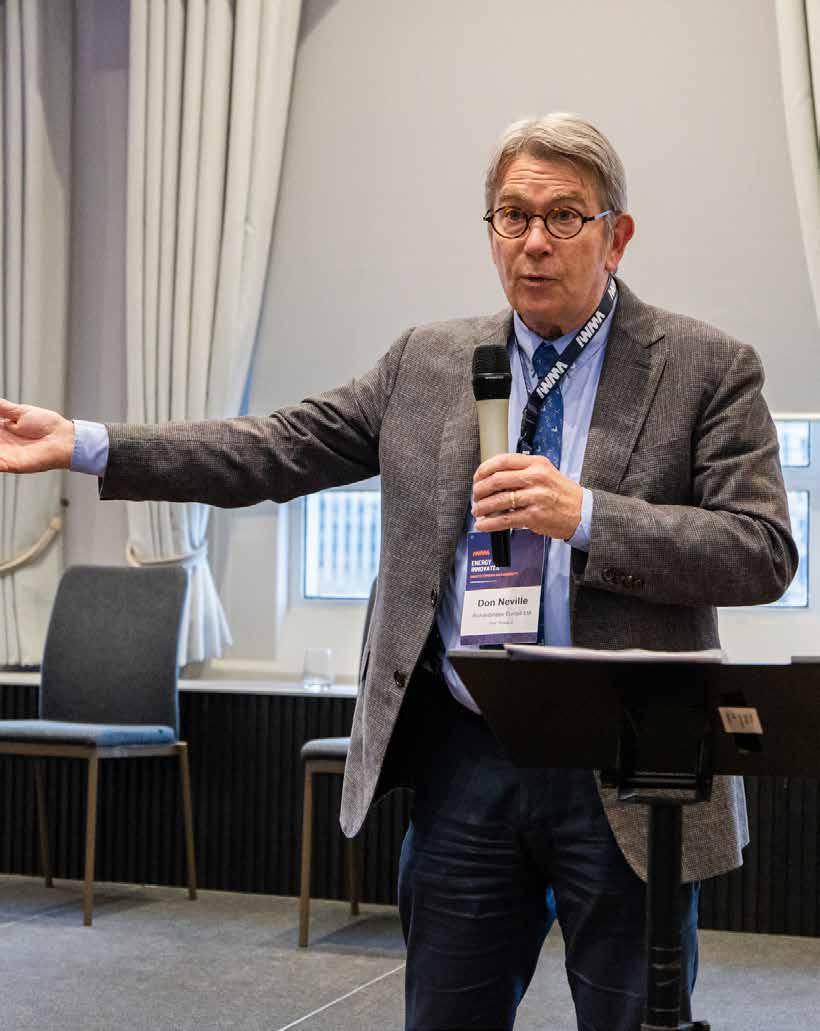
As many of you will know, in mid-November we ran a special conference at which members of the W&H senior team, Alan Mathers from exciting UK start-up XLCC and many more member representatives rolled up in Birmingham to discuss the green future of the industry in our conference Energy Innovates: Growth Through Sustainability. We talked about ways businesses can adapt to deal with rising energy costs, energy conservation, sustainability and environmental concerns.
We limited numbers to make sure everyone got time with the speakers and the W&H plant, among other things, and are pleased to say the event was a resounding success.

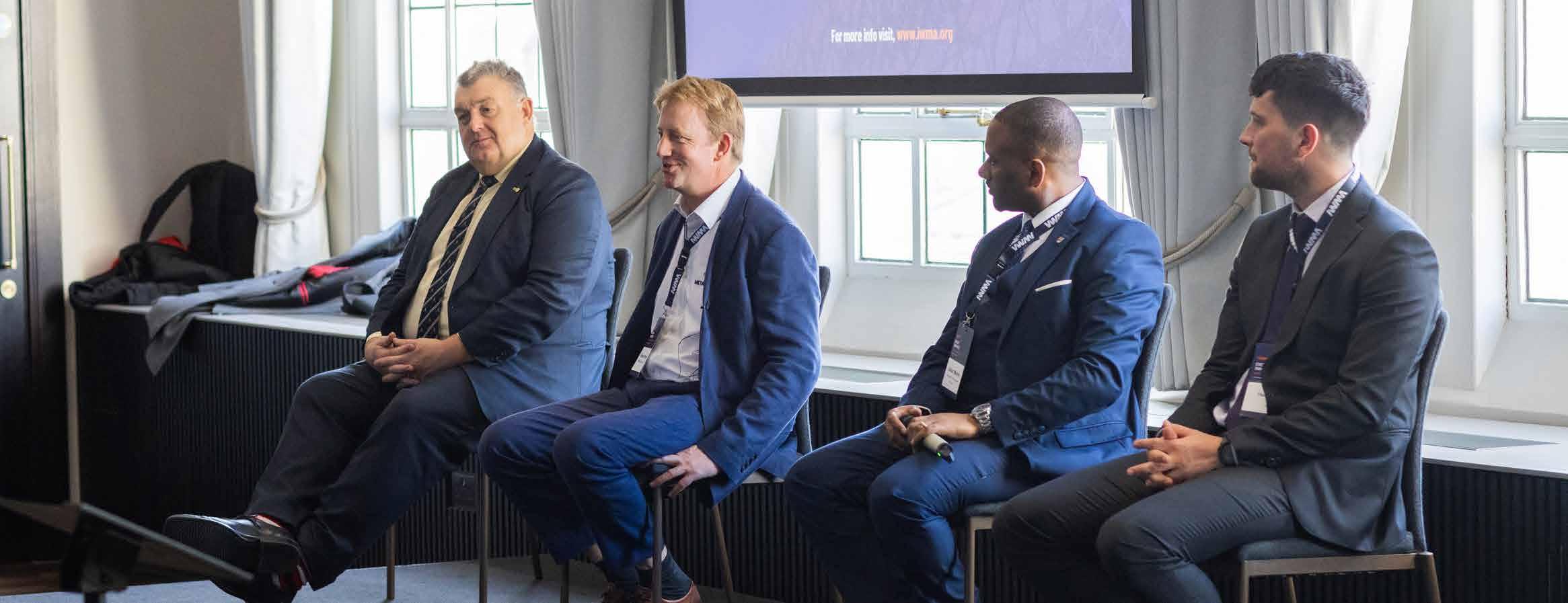
The IWMA’s first conference on the subject of sustainability within the industry – Energy Innovates – in Birmingham in mid-November proved to be optimistic about the future of wire and cable as it moves towards net-zero-emissions by 2050.
The two-day event, organised by IWMA and partners Webster and Horsfall Group, Messe Düsseldorf, the University of Birmingham, the Birmingham Museums Trust and Tyseley Energy Park, with the Hyatt Regency in central Birmingham, revealed a general “catch-up” on the efforts of the manufacturers involved, some concerning their own energy use, others the ways their processes and products can significantly reduce the world’s annual output of greenhouse gases in the search of ever-more sustainable power to run our homes and
businesses. Speakers from some of the most significant players in the wire and cable and energy sectors revealed where they are with net-zero ambitions.
The first exemplar was the factory setting for the first day of the conference, the Hay Mills site of Webster and Horsfall, once one of the world’s biggest makers of wire ropes, today a small company with a very large site used with great innovation for its own benefit and for companies around it and city bus users in general.
We have published a couple of pieces about the company and its neighbours: a biomass power plant and the University of Birmingham’s powerhouse Energy Innovation Centre research unit, the most recent a few weeks ago. Anyone keen to know what use a 17-acre factory site no longer filled with workshops and production machinery can be used for can find out on our website https://iwma.org/news/webster-and-horsfallthe-story-continues

Representatives of company management showed delegates how the site – now known as the Tyseley Energy Park – has been transformed into not only an ultra-modern specialist wire production facility but also an alternative fuels plant, biomass electricity generator and refuelling station (including a hydrogen station used by the city’s buses) that offers business unit clients electricity supplied by the on-site,10MW generating plant.
As well as a visit to some of Birmingham’s finest buildings for meals and short tours, delegates spent the rest of the two-day event hearing speakers from a number of businesses handling the move to emissions-reducing operations.
They ranged from Markus Gilch of German giant Maschinenfabrik Niehoff which has a company-wide commitment to reducing energy wastage for itself and for clients through more efficient machinery designs and controls, to Alan Mathers of XLCC, a company created specially to produce the cable for an £18bn project to bring solar power from Morocco to the UK through 16,000km of submarine direct-current cable, saving the planet over 10m tonnes of CO2 a year in the process.
This and similar “interconnector” projects involving solar power from sun-rich climates to power-hungry countries, as well as power from offshore windfarms, will cut global emissions faster than virtually any other measure. Read more about XLCC’s journey on our website iwma.org/news/water-and-electricity-do-mix
Two more speakers with plenty to say on the subject of energy distribution were Emir Ersahin, a commodities and energy analyst at business research company CRU, and Joris Van Der List of Q8Oils.
Emir gave delegates insights into an almost overwhelming amount of raw data available on energy production and distribution, and the increasing importance of energy security. Electric vehicles and renewables have become key players in the global energy revolution, and their insatiable appetite for cables is remarkable. Emir offered a deeper understanding of the cable industry’s pivotal role in driving sustainable energy.
Meanwhile Joris, Technology Manager and a lubricants specialist at Q8Oils – and a global sustainability leader within the company – is a man at the raw edge of the renewables transition in a company that, like other oil and gas giants, is being forced to re-evaluate its entire business ethos.

Joris is also a group leader of the UEIL Sustainability Committee – the European Lubricants Industry body representing over 450 companies in 22 countries.
Q8 is currently undergoing a massive transition from oil-based products to bio-fuels, even in the aviation fuels sector. Part of the change is a huge investment in company-wide energy use – everything from changing to LED bulbs, to converting many of its 5,000 European service stations to run on solar power from rooftop panels.
The conference heard from Dr Christoph Ruffing of Bridon-Bekaert Ropes Group on wire ropes and the transition to renewable energies, while Joakim Larsson shared details of his life-long commitment to enhancing productivity and sustainability in steel wire production, including the results of over a decade of research in wiredrawing process monitoring. The research could not only potentially advance the modernisation of the wire and cable industry’s core process, but would neatly dovetail into advances into sustainability and Industry 4.0.
A major name in the British lubricants field, Robert Brown – MD at Metalube – offered insights from a diverse personal background and explained how in 2018 he declared his objective to make Metalube the UK’s first lubricant manufacturer to achieve carbon neutrality. The task has been a story of innovation, determination and the pursuit of a greener future for his company and customers, and offered several insights into ways companies like his could play their part in producing a greener planet for everyone.
Jens Kieselstein – CEO of Kieselstein International –is not only at the head of a global leader in the wire sector, but is also a forward-thinking navigator of the challenges of modern wire-drawing plants. The dynamic requirements of such facilities are shaped by an everevolving landscape of legal regulation, the individual needs of wire manufacturers and the continuing search for differentiation in the market, even though the greening of the industry would suggest a more standardised, less individual stance.
Jens’s presentation delved into the world of customised solutions for the industry and explored the challenges in meeting specific requirements, the continuous development of machine technologies and the importance of remaining an attractive supplier in a rapidly-changing landscape. The conference also heard from Julian D Moore, the Business Engagement Partner at the University of Birmingham, whose innovation centre at Hay Mills is exploring new ways of producing and using power for the modern age.


Other speakers gave their own insights into the greening of their own sectors of the market and the market in general. The two days were summed up by IWMA chairman Don Neville: “We have been grateful to have heard from thought-provoking speakers such as Emir Ersahin, Joris van der List and Alan Mathers. Their perspectives on the future of the wire and cable industry were truly invaluable.
“Energy Innovates has showcased how we can make the wire and cable industry more eco-friendly, both at the smallest scale by not wasting energy and at the highest, intercontinental level by making cleaner energy available to all.”
“Our industry is constantly evolving, and there are several exciting projects on the horizon as economies transition to greater efficiency. Conferences like this help us to tabulate the latest ideas, and what works –either on a local level or a macro-scale.”
“By discussing what we are achieving and how we might do things more efficiently, both by saving energy directly and by developing new machines and processes that do more work for less energy, we can spread the message more widely and help to pave the way for a more sustainable future.”
“The commitment of the companies and individuals represented at Energy Innovates to advancing sustainable innovation in the wire and cable sector is truly appreciated. Together, we’re shaping a brighter and more sustainable future.”
After returning post-Covid in 2023 with great success, IWMA has set the date for the 2024 edition of its hotly-anticipated Industry Networking Lunch.
The next event will take place at the Delta Hotel by Marriott at Manchester Airport on February 21, when guests from all sectors of the industry will be able to meet and entertain guests, with a networking drinks reception at noon, followed by an excellent three-course lunch from 1pm, with guest speakers and presentations.
The annual lunch has always been a wonderful opportunity to both get together in a lavishly-appointed
room with friends, colleagues and business prospects, as well as gain insights and industry information from our expert guest speakers. IWMA member companies can secure places at £65 a head or £650 for a table of 10, while guests pay £85 (£850 for 10).
Members logged into the site when booking receive the member price at checkout. Booking a table simply involves adding 10 tickets to the payment cart, when we will allocate a full table to you or your company.
To secure your place today and to find out more about our range of event sponsorship opportunities please visit www.iwma.org
Industry doesn’t progress if it doesn’t constantly encourage new entrants to use their education and skills to take current standards to new levels.
That’s the reason IWMA runs its Young Employee of the Year awards – so the highest quality young entrants to the industry can be recognised not only for their work, but also for the way they interact and cooperate with their fellow young professionals and engineers, and how they organise their own professional development in line with their employers’ performance management process.
IWMA Young Employee of the Year is an award for younger employees, but it relies on the expertise and experience of expert managers and engineers, who are asked to nominate potential candidates. The person chosen will receive the award at IWMA’s Industry Lunch on February 21, 2024, at the Delta Hotels by Marriott, Manchester Airport.
Nominees, from any department within a business, must be able to demonstrate a significant, sustainable contribution to their organisation, their work team and their own
performance. They will need to demonstrate a level of commitment to the objectives of their organisation –above and beyond that normally expected of an individual at their level.
Candidates will also need to be able to demonstrate responsibility for their actions and, as far as possible, the actions of those working around them as they contribute to their own area of responsibility.
To be eligible, a candidate must:
• be a current employee of an IWMA member company
• be under 30 years of age at the time of nomination
• have worked in their organisation for at least 12 months
• be nominated before 12th January 2024
No correspondence regarding the winner or nominations will be entered into by the judges, whose decision will be final.
Visit www.iwma.org to find out more and submit a nomination. A nominator should detail the achievements of the individual in no more than 500 characters per question. All applications must be received by 12th January 2024

We are pleased to announce the wire Düsseldorf Education Award for 2024. This programme has been developed from the previous Travel Award Scheme with added activities to increase the benefits and learning opportunities for all participants.
Those lucky enough to gain a place on the programme will arrive in Düsseldorf on Monday 15th April in time to attend a Meet & Greet Event with fellow awardees and key IWMA staff at the hotel where they will be staying. They will then access free entry into wire 2024 and for the next 3 days take part in the IWMA itinerary of activities including our Training Fundamentals Programme incorporated into a tour of the show. This programme is a fantastic opportunity for those new to the industry and new to wire exhibitions. Not only will awardees get to experience the show first hand, they will have the opportunity to learn from the industries leading experts and network with the industry at our wire networking event.
Applications must be submitted by 31st January 2024 and those selected will be notified by 15th February 2024.
The IWMA Education Award provides the following benefits –
Free entry to wire Düsseldorf 2024 (16th – 19th April 2024)
· 4 nights accommodation at the Novotel Düsseldorf City West (Check in Monday 15th and check out Friday 19th April 2024)
Contribution of up to £500 towards flight / travel costs (Flights under the cost of £500 will be booked by the IWMA. Flights over the cost of £500 must be booked by member company and IWMA will reimburse the £500 upon receipt of invoice)
Training Fundamentals Tour of wire Düsseldorf following both a ferrous and non-ferrous programme
Meet & Greet Networking Event with other Education Awardees and IWMA board of directors
IWMA wire networking event
· Guided Evening Tour of Düsseldorf to include Food & Drink
· Presentation by IWMA and Messe Düsseldorf GmbH upon completion of programme
Application Criteria
Must be 18 years of age or older
· Must be nominated by a senior member of staff Must be employed by an IWMA Member Company
· Must be available to travel to Düsseldorf, Germany on Monday 15th April 2024 and undertake a full 3 day programme and return travel on Friday 19th April 2024.
Please note we can only accept one nomination per member company. Thank you.
To submit your application please visit www.iwma.org/open-applications/ wire-education-award-2024
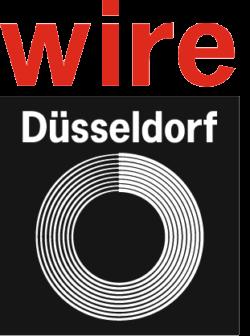
Tuesday 16th and Wednesday 17th April 2024

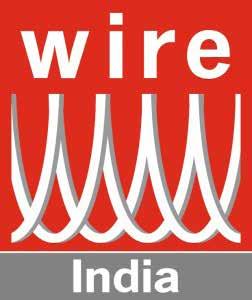
Date TBC



Selport International was founded in Portugal in 2005 and represents several international manufacturers of diverse industrial products.
Our primary function is to offer a service to specialist manufacturers who wish to market their products in Spain, Portugal, North Africa, and the Middle East. We are agents for a wide range of products such as chemicals, halogen free compounds, mica tape, machinery, anti-corrosion grease, alloy wire, bars and wire rope for a variety of sectors, such as ceramics, fertilizer, cable and spring industries. We also offer recycling of spent catalyst from oil refineries and fertilizer plants, and as well recovery of Platinum Group Metals from mainly nitric acid plants. www.selport.com

XLCC will establish a new, export-led, green industry in the UK: world class HVDC subsea cable manufacturing.
Our mission is to provide the connectivity required for renewable power to meet future global energy needs. www.xlcc.co.uk

Shanghai Geili Precision Dies Co., Ltd is a certified Manufacturer and Trader Manufacturer company located in Songjiang, Shanghai province , China. Established in 2010, Shanghai Geili Precision Dies Co., Ltd specializes in Diamond Dies products ranging from PCD Dies, ND dies, Diamond Dies, Drawing dies and different types of Moulds, Jigs and Casting Dies. www.geilivable.com

Conoptica has been providing high tech camera-based measurement solutions for the metal working industry since 1993. We make sure that the metal working industry has access to key quantitative data about their products and tools. Conoptica is the market leader for measurement equipment in the wire & cable industry. We are working to create a generation shift for inline measurement equipment in the machine tool industry. www.conoptica.com
Hubei Keda New Materials Co., Ltd. specialises in the research, development, production, and sales of polymer materials. The main products are photovoltaic cable materials, LSZH cable materials, LSZH cable materials, irradiation cross-linked rubber cable materials, new energy vehicle cable materials, charging column cable materials, locomotive marine cable materials and PVC cable materials used in photovoltaic, electric vehicles, railways, urban transportation, ships, electric power, home appliances and communications amongst other industries. Hubei Keda has a group of professionals who have been engaged in the formulation and production of polymer materials for many years as well as advanced research, development, and testing equipment departments. www.kedamaterial.com
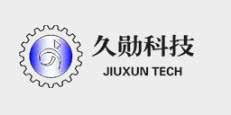
Sichuan Jiuxun Technology Co., Ltd. was established in 2017, located in Guanghan City, Sichuan Province, China. Mainly engaged in the research, development and manufacturing of metal smelting furnaces, non-ferrous metal continuous casting and rolling production line, environmental protection system, new cable equipment and related spare parts. our enterprise’s main target is to provide global customers with chinese intelligent manufacturing solutions of copper and aluminum alloy continuous casting& rolling production line, and most of our clients belong to wire and cable industry, metal recycling and processing industry, aerospace materials manufacturing industry, and University Research Institutes, etc. www.joohonorccr.com
Yangzhou Tengfei Electric Cable and Appliance Materials Co., Ltd is a Sino-foreign joint venture and a national high-tech enterprise. Our innovative achievements include a national postdoctoral scientific research workstation, enterprise academician workstation, and Jiangsu province engineering & enterprise technology research centre. Recognized for our pioneering work in nanometer new materials for ultra-high voltage cables, we boast multiple provincial-level innovation teams and over 40 intellectual properties in cable material manufacturing. Our facilities encompass a 1200 m2 technology research and development building within a 30000 m2 plant area, totaling 48000 m2. Our testing equipment meets ISO9001, ISO14001, and ISO45001 standards, and our products hold the EU SGS ROHS certificate. With a track record as a primary supplier for renowned cable factories in China like Hengtong, ZTT, Shangshang, Far East Group, Baosheng, Jiangnan, and global partnerships with Prysmian, Nexans, LS, our company leads the industry comprehensively in research, sales, and management. www.tengfeicable.com

SCGC is the Asean’s leading innovation company in chemicals. A leading innovation company, our main business is the production of plastic resins or polymers moulded into products used in our everyday lives, ranging from food packaging, automotive parts, medical equipment, electrical appliances to infrastructures, such as pressure-resistant pipes and telecommunication cables, among others. Additionally, SCGC operates other businesses connected to our primary business, including SCGC Floating Solar Solutions, clean energy solutions, emisspro® coating solutions for industrial furnaces, and many more. The chemical innovations developed by SCGC are pragmatic and applicable to daily lives and include innovations with industrial applications. All that align with sustainability trends, environmental trends, and mega trends. www.scgchemicals.com
The world’s recent energy problems – in Europe in particular –have thrown growing fuel supply problems into sharp relief.
Upheavals have sharply raised gas, energy and raw materials costs – the Ukraine war, for example, where political restrictions on Russian products and gas have pushed up energy costs in the rest of Europe.
There has been one positive result of the chaos: the public is becoming more used to the idea that energy production must become more efficient, and less deadly.
We are now used to saving fuel when we can, and not wasting it when we can’t, and with that comes a keen awareness of the fragile political structures that govern energy prices. We want greater stability and capacity without the accompanying pollution and emissions.
The public inertia over price that helped to maintain the status quo for so long is increasingly aligning itself with the sustainability movement, which has been prevalent in the generating industry for some time. This is proving to be a huge boost to the energy supply industry, and where there is investment in new, greener, power generation – and we are talking primarily about electricity – there is a huge demand for cable and wire to serve that investment.
Recent industry reports have suggested a likely rise in the cable and wire market of up to 50 per cent before the end of this decade. This is strengthened by the postpandemic infrastructure projects it is hoped will stabilise
world finances and increase jobs and trade: America’s trillion-dollar, general infrastructure project, for example, which includes billions of dollars for upgrading and making more reliable and efficient the somewhat dilapidated US national power grid, and the installation of a network of EV charging stations. America is already one of the big three solar producers, with China and India, the trio making two-thirds of the planet’s solar energy, but demand means each has a long way to go before solar energy makes up a significant part of the national power equation. On that basis Chile, El Salvador and Jordan, and Spain in Europe, make far more of their own solar energy than the larger producers – Chile is so rich in solar energy it has plans for a 15,000km supply cable to China.
The scale of the move to greener forms of energy generation is enormous: politicians continue to discuss reintroducing or expanding nuclear power, despite its negative aspects, but supply companies are already investing billions in wind, solar and even tidal energy generation, as well as increasing research into hydrogen fuels for transport applications.
Another big trend is about the way we use power. The infrastructure needed to move oil and gas across countries (where it will often be used to drive turbines to generate electricity) is extensive, but electricity itself is these days cheaper to move over even greater distances. This has brought about an unexpected result, given the world’s political fragmentation – the increasing connection of countries and continents to share or sell electricity.
Australia’s Sun Cable project is an example of many solar-power, long-distance projects. A vast solar farm in Australia’s hot Northern Territory will supply power to a huge battery farm in Darwin, then gigawatts of energy will flow to power-deficient Singapore through high-voltage direct-current (HVDC) cables over 4,000km long, the batteries filling in the supply shortfall when the sun sets on Australia. Australia also recently gave the go-ahead to one of the world’s biggest batteries, in Western Australia, which will hold 1.2GW of energy for the Melbourne area,
while even international retailer Amazon has announced, at the other end of a very big scale, plans for 24 large solar arrays on the roofs of their huge warehouses in Spain, giving the online giant almost 800MW of extra capacity.
Hugely ambitious is the Xlinks-XLCC plan to link a large solar farm and battery store in Morocco with the UK, 3,800km away, by submarine cable. The 10.5GW project doesn’t yet have UK government approval, but the first solar-generated electricity is expected to flow by the early 2030s. Morocco is keen to exploit its natural resource; the Devon connector isn’t the only project the country has in the works.
These are only two of dozens of interconnector projects in varying stages of construction or use, most of which currently link suppliers and customers for load-balancing and peak distribution of conventionally-generated power – itself a “greener”, more efficient way to use current capacity.
The UK alone imported around 28 terawatt hours of electricity through interconnectors in 2021 – a four-fold increase in a decade. Submarine cable links exist, or are planned, with Ireland, Norway, Germany, Denmark, Belgium, the Netherlands and France, and all are expected to be fully up and running in the next couple of years, with a capacity of around 15GW. Naturally, these projects demand thousands of kilometres of highly-expensive cable, but for every kilometre of high-voltage types there will be tens-more kilometres of lower-capacity wiring to feed power where it is needed, cable production flowing down from the big international HVDC suppliers to smaller, national companies.
While much of the world wrestles with competing generating systems, some countries find the decision easier. In the UK, solar comes a poor second to wind power: we already have several large offshore wind farms, including the world’s biggest, Dogger Bank 1, which came into operation a few weeks ago. Once its three phases are complete, in 2026, Dogger Bank’s 277 turbines will supply enough electricity to power around six million homes. Other countries with similarly changeable weather systems also see wind power as an obvious prospect – one that demands thousands of miles of HVDC and lesser cables to link offshore generation to the shore.
Some areas of the UK and other similarly stormy coastal waters are also prime candidates for tidal power generation. Over several decades the problem has been harnessing the energy in a reliably consistent way, but in recent years technologies have improved and costs have started to fall. Some predict the cost per megawatt will fall below that of nuclear power in the next few years – if the sector receives careful government support in these early years; support such as that given to the fledgling wind industry, which 11 years ago generated power for only four per cent of UK homes, and now supplies around a third of them.
Scotland is the major UK centre for tidal energy. In the Pentland Firth (the strait between the northern tip of the Scottish mainland and the Orkney Islands) a tidal generator already produces twice the power generated by tidal means everywhere else in the world. There are tidal projects to install over 50 turbines (50MW) on the seabed there by 2027, and off the Orkney Islands, a single tidal generator providing power for 2,000 homes will be joined in the next couple of years by three more.
While tidal power is likely never to match other forms of renewable energy in the UK, it could play a significant part in decarbonising capacity.
Whatever the world chooses though, the message is clear: the wire and cable industry could be seeing the biggest boom since national grids and electrification started to appear across the world, less than a century ago...
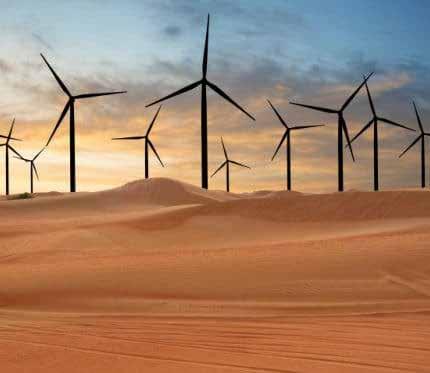
One of the main speakers at IWMA’s November Energy Innovates conference in Birmingham was Alan Mathers, Project Director for cable-maker XLCC’s role in the development of a £18bn Morocco-Devon scheme to bring solar energy to the UK grid.
Alan revealed how XLCC was born of necessity. The international capacity to provide project leader XLinks with the cable it will need simply didn’t exist, so XLCC, was created to make it – 16,000km of it. Standardisation and scale will help the final system to reduce the UK’s carbon output by millions of tonnes a year...
Green technologies are becoming massively important to the wire and cable industry as solar power, wind farms and other means of power generation eat up the world’s supplies of HV cables and the other elements associated with getting electricity from source to consumer.
One vital item in particular – high-voltage, direct-current submarine cable – is in such demand that supplies could become very hard to come by as world production struggles to keep up. Direct-current cables experience far lower transmission losses than AC cables over long undersea distances, so efficiency is far greater.
“Up to about 60km, submarine cables can be standard AC types, but over greater distances HVDC is the way to go,” explained cable-making company XLCC’s Project Director, Alan Mathers.
XLCC is supplying the cable for UK company Xlinks’ plans for a solar farm in Morocco, from which cables will eventually carry power to Devon for up to seven million UK homes. The estimated £18 billion project will use four 3,800km cables, so efficiency is a major consideration.
“HVDC cable has transmission losses of about three per cent over a thousand kilometres,” explained Alan. ”We will be losing no more than about 13 per cent in total – including the one per cent at the converter stations at each end to change the current to DC then back to AC. A standard HVAC cable at our lengths would lose significantly more.”
The Xlinks project – of which Alan was initially a part – hit an early stumbling block: no one made that much HVDC submarine cable. The project will need around 16,000km over four years, and European production at the time of inquiry was only around 2,000km. The big makers were unable to increase production, so despite the huge cost of entering the market, separate company XLCC was born in 2020 – a single-product company to serve, at the time, a single customer. It was potentially a very expensive risk.
The cable element of the project is extraordinary: XLCC needs a location matching fairly strict criteria – the need for planning approvals (including from air traffic control) for a 185m extrusion tower; skilled labour; training a new generation of expert cable jointers, and most important of all, the requirement to build a factory near the water in a deep-water port – since each delivery length of cable is 160km long and weigh 10,500 tonnes. Not the sort of thing you would want to move a few kilometres from factory to port.
The project’s new, state-of-the-art, cable-laying ship has a 26,000 tonne payload and will lay two lengths of cable at a time – 21,000 tonnes’ worth. Each 160km section will take around eight days to lay – in good weather – in 200m-700m waters off the coasts of north Africa, Portugal, Spain and France before reaching Devon, 3,800km away. Then they will turn round and start again on two more cables, forming two “bipoles” – two direct-current circuits. The process will take three to four years.
The company has found a site at Hunterston on the Firth of Clyde – some of the UK’s deepest coastal waters. The area lost its nuclear power plant in 2022, so XLCC will hopefully pick up some of that plant’s skilled workers when the new factory goes online. The plan is to start making cable in 2028, then to get the first pair in the water by 2030 and the second pair by 2032. In energy infrastructure, everything is long term...
So all in all, XLCC has had to dip not a toe into the market, but the whole corporate body: “Very few places in the whole of Europe would have been suitable sites,” explained Alan. “With the need to start up, develop, certify and start producing our cable, we were looking at five years of money going out.”
But plans have been carefully staged, so the company will build the first three of six production lines for some shorter export cables (to bring power onshore from offshore wind farms) of perhaps 200km – 300km and for network reinforcement projects (moving power with offshore cables from point of generation to demand area). The factory can then be certified for the production of this cable design. When Xlinks is awarded a government “Contract for Difference” by 2025, the capacity can be increased to six production lines and production ramped up dramatically.
And it looks like the company’s faith is going to pay off in a big way. The growth in the market for HVDC cable means XLCC is likely to be in business supplying its only product – 525kv DC, aluminium-cored cable – from more than one factory for at least the next 20 years, employing thousands of people in the process.“Unlike the other big cable makers, we will supply just the one product, at a discount to the typical market price,” Alan continued. “We will start small at Hunterston, with three lines, each capable of producing a metre of cable a minute, each metre weighing 70kg, for which we already have sales understandings. There are lots of generation projects in Scotland: buying our cable, though its power carrying capacity might exceed immediate development needs, will be a good investment for the possibility of future expansion – in addition to being cheaper than alternatives.”
And let’s not forget a vital part of the operation: the cables themselves. Xlinks will need four 3,800km cables, but Hunterston will be able to make, and its ship to lay, no more than 160km at a time, in 20km sections. They will need a way to join them together...
That’s where XLCC has again planned ahead: “Short of poaching the 60 expert jointers we need from factories in Italy, Germany, Sweden or wherever, we went back to the start and wrote course materials for local engineering college courses,” Alan explained. “This year we started to recruit apprentice jointers, so over the next three years we will train them to become fully certified.
“When we make the first test cables in 2026 and get it certified in 2027, they will be ready for the first sections of the finished cable in 2028.”
The project that started out looking like a huge leap of faith now looks like making XLCC the world’s biggest supplier of the most-in-demand long-distance cable for some years to come. The Morocco-Devon project, for example, is known within the company as ”Xlinks-1”, since there are already tentative plans for two more longdistance connectors.
“These cables are going to be in demand everywhere, as countries around the world seek to fulfil their net zero commitments,” suggested Alan.
And despite its scale, the enterprise will be gloriously green in nature: “Some objectors have complained that the project isn’t really eco-friendly because the removal of by-products from the XLPE plant will produce the about 300 tonnes of CO2 a year.
“While that might be true, they ignore the fact that when the power comes online, that 300 tonnes of CO2 will be offset in about 15 minutes, since the power plant will be saving around 10 million tonnes of CO2 annually that would have been generated in conventional power stations...”

Governments worked together to connect the world, now they can do the same to power it, sustainably.
Georgie Skipper | International Faculty Fellow at MIT Sloan | Fulbright Scholar
When we talk about the clean energy transition, we talk a lot about the role of solar, storage and batteries. Something we don’t talk about as much is the silent evolution of high voltage direct current (HVDC) cables. They link electricity generation to where the power is needed - cities, regions, homes, industrial centres and so on. In the case of renewables - they are pivotal to take the renewable energy supply - generated from wind and solarto grid networks and onto the consumer. In so many ways, electricity networks are the backbone of the transition, and HVDC cables provide a critical part - connecting grids and exporting electricity across borders. However, the slow development of grid networks is putting our climate goals at risk - the energy transition may indeed be hampered by our ability to develop electricity grids at scale and at the speed we need to meet net zero targets.
HVDC cables have existed since the early 1900s. The technology is evolutionary and over time crucial advances thanks to demand and innovation, have unlocked the potential of electricity markets on a global scale. The result is that electricity can be continuously transmitted at greater distances, enabling energy trading to support the transition away from carbon intensive energy sources, to renewable sources including wind and solar.
Europe and the UK are the home of HVDC cables – in terms of operation and technological innovation. There are more than 30 subsea HVDC cable projects in operation, together spanning some 8,000 kilometres, and another 50 projects planned or under construction.
For example, Europe houses the longest subsea cable the North Sea Link which runs 720 kilometers between Norway and the UK; the deepest cable - the SA.PE.I. between Sardinia and mainland Italy, which is 1,640 metres below sea level;, and the first subsea cable completed in 1954, the Gotland High Voltage Direct Current Link between the Island of Gotland and mainland Sweden.
Tier one HVDC cable manufacturers are located in Europe, including Prysmian Group (Italy), NKT (Sweden) and Nexans (France), as well as new entrants including XLCC, establishing two manufacturing facilities in the UK.
The opportunity to utilise grid technology is evident from the European Synchronous Grid that connects some 400 million consumers across 24 countries – making it the largest synchronous electrical grid in the world. These cables securely transmit energy from locations that have a surplus of supply to those with unmet demand.
This infrastructure was put to the test at the beginning of the Russia-Ukraine crisis, when the planned connection of Ukraine to Europe’s grid was brought forward urgently.
Within a few weeks of the invasion, Ukraine was connected – in what the European Union Commissioner for Energy, Kadri Simson said was “a year’s work in two weeks.”
A testimony to the maturity of the technology, and the importance of building such energy infrastructure.
Despite this industry’s maturity and established foothold in Europe, the proliferation of grid interconnection, enabled by HVDC cables, is only just beginning. Considering that HVDC cables are required to link offshore wind farms to onshore infrastructure, these cable systems will play an even greater role in the global transition.
Indeed, the planet’s increasingly urgent and deeply connected environmental and economic needs dictate that harnessing HVDC and grid technology is an absolute requirement to meet net zero needs. In the coming years, this evolutionary technology needs to connect continents, countries and a shared greener grid infrastructure, particularly pertinent for the energy transition in the Indo-Pacific region across its 38 countries.
In order to achieve this, the development of electricity grids must be supported by strong and cohesive international policy frameworks, inter-government agreements and the support of public and private sector capital.
To inform this industry’s development, it is worth casting our mind to the evolution of the global telecommunications network, which provides an insightful technical, commercial, policy and regulatory roadmap.
Our ocean’s floors are already home to over one million kilometres of subsea telecommunications cables as part of an infrastructure that has grown over a century or more. Submerged at depths of up to 8,000 metres, subsea fibre optic cable systems are unseen yet vital to the world economy. They are the enabler of our communications and information flow – the internet, text, emails, social media connectivity – supporting it all.
As testimony to the capability of this subsea cable infrastructure, just take a look at the spaghetti bowl of fibre optic cables operating in the Indo-Pacific region. For example, there is the SEA-US cable system, linking Indonesia, the Philippines, Guam and the United States including Hawaii and Los Angeles. The SEA-US system is 15,000 kms in length and was planned and engineered to bypass areas in Asia that are prone to earthquakes and seismic shifts enabling stable connectivity.
Further to that, Vocus has just announced the Darwin, Jakarta, Indonesia cable system, operational as of only a few weeks ago. Strategically relevant cables such as Digicel Pacific and the Coral Sea Company, are just a few of the operational cables in the Pacific Islands, with more slated in the near future.
Many often cite the issues related to security of supply, when considering the issue of electricity provided through subsea cable systems, and while this is a very important issue, and requires another article in and of itself, it is certainly insightful to consider how many fibre optic cables have been operational for decades, with limited disruption from natural events or negative factors.
Hindsight shows that today’s vital fibre optic cables only proliferated when governments put in place international legal frameworks to resolve issues of transit rights, cable protection, freedom to lay cables and the right to send traffic through international networks.
At present, intergovernmental cooperation on fibre optic cable project development includes the UNESCAP AsiaPacific Information Super Highway (AP-IS). Established in 2016, the UN-led region-wide intergovernmental platform is an initiative which seeks to identify and bridge gaps in the largely subsea fibre optic cable networks that form the backbone of Asia-Pacific’s internet infrastructure.
Cross-border HVDC projects – especially those intended to facilitate trade in renewable electricity and resulting global decarbonisation – will similarly flourish with government cooperation on areas such as grid harmonisation, renewable energy certificates and carbon accounting. Such initiatives reflect the understanding that commercially led projects rely on international regulatory and policy actions that are within the remit of governments to implement, without which the building of existing telecommunications infrastructure would not have been possible. The HVDC sector needs a similar approach, and quickly.
There are compelling reasons to move with speed and at scale. Energy, like telecommunications and the internet, is a vital public commodity directly correlated to economic inclusiveness and growth. Large, interconnected power systems will play an important role in the decarbonisation of industries and economies, providing access to cleaner sources of renewable energy. As the global power system becomes increasingly dependent on cross-border transmission, HVDC links will correspondingly increase in importance to global energy supply and security. That can happen in our Asia Pacific region.
One of the very first fibre optic cables, and indeed the first communication link between Australia and Europe, commenced in Adelaide and ran through Powell Creek in the Northern Territory to land in London. The cable is more than 20,000km long - half the circumference of the earthand nearly 15,000km of it beneath the ocean.
Setting up the technical and regulatory dimensions of cross-border energy trading is more complex than in the case of fibre optic links, due to an array of standards and generation capacities as well as uneven demand across economies.
The relative complexity makes it all the more necessary for governments to work together to enable the growth of an industry that is likely to prove as strategically important as the telecommunications one it follows.
Georgie is a founding member of the Green Grids Initiative (GGI) and GGI Asia Pacific Working Group. She is a Visiting Scholar and International Faculty Fellow at MIT Sloan School of Management in Cambridge, Massachusetts. Georgie was the Senior Adviser to the Foreign Minister of Australia from 2013-2018.
Green Grids Initiative MIT Sloan School of Management

Birmingham’s 300-year-old company Webster and Horsfall played a prominent role in the recent IWMA sustainable growth conference, Energy Innovates. We caught up with the company’s remarkable turn-round and transition for its fourth century of operations.
While the global wire and cable industry increasingly supplies new products with the aim of making our consumption of raw materials and emissions of greenhouse and other gases healthier for the planet, not all the work is on an intercontinental scale.
In the UK, Webster and Horsfall – now in its 304th year –is making its own inroads into reducing industry’s energy needs and refining its products for ever-more specialist uses, in tune with the demands of business survival and growth in the 21st Century.
In 2019 we featured W&H prior to its 300th birthday in July 2020, and we have been catching up on the plans the company sketched out back then. Attendees of IWMA’s November conference, Energy Innovates, heard the full scope of the growing success story as they toured the 17-acre Hay Mills site in Birmingham.
“Delegates were able see our historical archive, the shop floor machinery and production techniques,” explained director Jonathan Horsfall. “We also took them round Birmingham University’s energy innovation centre, which is on the site, and give them a wider tour of our low-carbon operations.”
W&H fell on harder times with the loss of the UK coalmining industry after being a major world manufacturer of wire ropes and similar products for over 50 years. Recently, the company has refined its business and now mainly concentrates on new, short-run specialist drawing operations, once again becoming a leader in the process.
“We find small niche markets for specially-shaped profiles, flat, ground or polished wires, even straight lengths,” explained Jonathan. “We’ve always been able to do much of this, but needed orders for larger quantities to keep the machines and furnace running. Now we mainly use induction heating for heat treatment and we can pretty much turn the machines on and away they go, for whatever quantity has been ordered. All that, plus the experience of 300 years of wire working...”
Which means when the big makers stop producing items in the millions – combustion engine valve springs, for example – Webster and Horsfall can supply the smaller quantities needed for the fewer engines being produced. Electric vehicles aren’t beyond the company’s reach
either: they might not make the quantities needed for motors and batteries, but they are the ideal supplier of springs for seating, braking systems, door latches and so on.
The company has tried to reinvent wire-drawing, with new techniques that offer specialist production at the highest quality for auto, motorsport, maritime diesels, aerospace, medical and many other applications. W&H constantly seeks out new markets around the world, as well as finding new ways of working with the surrounding Tyseley Energy Park facilities to make production more efficient.
That’s the other main reason why companies far and wide are talking to W&H: its second leadership role is in smallscale energy generation.
Business and government officials from Vietnam, Sri Lanka, Mexico and others have visited Hay Mills to look round the site’s energy production facilities, known as the Tyseley Energy Park, situated on the once-vast Webster and Horsfall site and a model for similar industrial sites.
“Any country with a developing industrial base but without the infrastructure to keep plants running all day, every day, can learn things here about biomass fuels, small-scale electricity generation, and so on,” Jonathan explained. The company’s net-zero leader on low-carbon and energy matters is Tommy Allsopp, who is excited by the plans for Tyseley.
Spurred on by the Birmingham local authority’s waste incinerator on the site next to Hay Mills, W&H became landlord to a biomass waste energy plant on its own site in 2013 - which now supplies lower-cost energy to all the Tyseley business units with significant capacity to spare.
The plant can burn up to 70,000 tonnes of waste wood a year, producing up to 10MW of electricity – only 10 per cent of which is currently used by the businesses in the park. The green energy facility has acted as an anchor attraction for the business park, and there are plans to expand coverage over a much wider surrounding area.
When Birmingham City Council declared parts of the city a “green zone” in 2018, to encourage the development of cleaner-operating businesses, it backed its intentions by buying a fleet of 20 hydrogen-powered buses.
The hydrogen is produced and the buses fuelled by a company based at Tyseley Energy Park. The city council
plans to buy another 120 similar buses for local routes –all of which will be refuelled at Hay Mills.
Tyseley is also developing a 350Kw EV truck-charging stand (complete with cafes and other facilities) and has a plant that refines hydrogenated vegetable oils into diesel fuel. Users can fill up with hydrogen, biofuels, compressed natural gas and electricity at unmanned stations on the site, 24 hours a day.
“We’re trying the make the energy park an exemplar for fuel creation and distribution, and how these work with local industry,” said Jonathan Horsfall.
A big piece of the low-carbon jigsaw fell into place when the University of Birmingham moved its energy research centre to the TEP in 2019, opening in 2021: ‘It gave the site increased credibility as a centre for cutting-edge research into thermal storage, hydrogen fuel cells – even AI-driven robots for recycling old batteries,” said Tommy Allsopp. The university is also undertaking a joint project with W&H to reduce the impact of hydrogen creation by using ammonia rather than water as the raw material.
“Traditionally, water is the raw fuel,” explained Allsopp, “but its electrolysis into hydrogen and oxygen uses a lot of electricity, and it’s harder to transport once it is made. Ammonia holds more hydrogen per molecule and can be “cracked” into its constituent nitrogen and hydrogen with less energy. It can also be transported more safely.”
The park is becoming increasingly successful as a place to do business: “Our plans for it are steadily falling into place,” Allsopp declared. “Only two of the park’s business units are now vacant; we have plans to extend to a wider field of operations in a strategic partnership with the university and the local council, and within five years TEP should be at full capacity, producing green energy in the forms we will need to use it for years to come.”
“The company was struggling 15 years ago, but It’s not too outlandish to think now that we will still be here, and thriving, when our 400th anniversary comes round!”
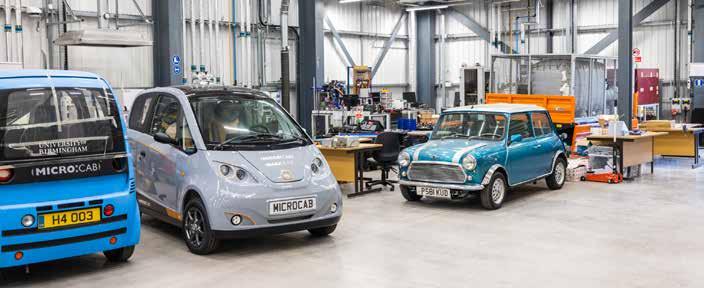
Every year, CRU presents a detailed end-use analysis of major sectors for the insulated Metallic Wire and Cable Industry for the previous year. This Insight provides an overview as to how cable demand evolved throughout 2022. It looks at sector by sector y/y cable consumption growth and analyses some key trends that have impacted these growth rates. It also gives an analysis on types of cables that are consumed in sectors, and how big each sector is in a given region. Finally, this insight touches on types of applications that these cables will be used for in a given sector.
The charts on this page illustrate the four downstream sectors CRU’s cable demand analysis is divided into. The biggest end use sector – construction – constitutes 40% of the total cable demand. Utility and industry application account for roughly 26% and 25% each. Meanwhile, 10% of cable demand is used in transportation sector. Figure 1 shows the growth of demand in these sectors over the past calendar year.
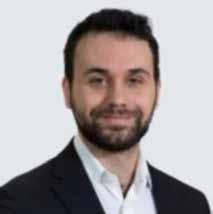
In 2022, the global cable market experienced a slowdown due to the waning impact of post-Covid growth, continuation of the zero-Covid policy in China, as well as the war in Ukraine and the subsequent rise in energy prices. As shown in Figure 1 (left hand side), cable consumption growth in all key sectors was lower than in 2021.
Cable consumption growth in construction dropped to 1.9% growth year on year, making it the slowest growing sector in our analysis. Despite this, construction remained the largest cable end-use sector, consuming approximately 7.2 Mt conductors of cable (see Figure 2 left-hand side). The real estate crisis that started in China, after financial problems of Evergrande surfaced in 2021 Q4–2022 Q1, impacted Chinese real estate investments in the rest of 2022. Subsequently, the construction sector of China struggled, with real estate investment rate dropping by -8.8% in 2022. Wider structural weakness in Chinese residential construction was a major reason for this. Compared to 2021, the global economy in 2022 experienced a lower growth rate, with factors like high energy and commodity prices contributing to this. This has weighed heavily on global low voltage energy cable consumption, which only grew by 1.5% in 2022, as 62% of global low voltage energy cable consumption occurs in the construction sector (see Figure 1 left-hand side).
Despite the slowdown, transportation-related cable consumption performed relatively well last year, growing by 3.0% y/y. This relatively high growth has been supported by a strong growth in automotive production. As per CRU data, global car production in 2022 grew by 8.7% y/y. This strong growth is supported by a slowing Covid-19 recovery, as well as a waning semiconductor shortage which has been prevalent in the industry since 2018. Despite this growth, the volume of cars produced in 2022, 68,890 thousand units, still fell short of pre-2018 levels which reached 80,975 thousand units. Therefore, it could be said that the current strong growth in this sector is primarily coming from a low base.
Cable consumption in the utility sector has also experienced relatively healthy growth of 2.6% y/y in 2022. Similarly, to construction and transportation, the slowdown in this sector has also occurred due to waning impact of post Covid-19 growth and rising energy prices. However, the growing importance of renewable energy still supported strong growth in this sector.
Power cables – of which 52% are used in the utility sector – have seen the biggest benefit of this growth, growing by 3.6 % in 2022 – more than any other cable type.
Cable consumption in industrial applications, similarly to utilities, have also managed to escape a steep slowdown and grew by 2.5% in 2022. A slowdown in the home appliance industry, after a fast-paced growth experienced during Covid-19, was offset by a strong appetite for renewable energy and industrial motors.
On a regional basis, China remains the top cable consumer across all four major end-use sectors (see Figure 2, right-hand side). Cable demand for Chinese construction remains the largest single cable end-use, accounting for 11.8% of total global wire and cable demand, down from 12.3% in the previous year. The slump in the Chinese construction sector impacted low voltage energy cable demand significantly, as this category of cables experienced a 4.3% y/y decline in 2022.
2022

% of conductor tonnes




Electrical applications dominate the wire and cable market
Figure 3 illustrates specific applications of wire and cable within each sector. In 2022, electrical applications, predominantly in construction and industrial usage, accounted for 42% of cable demand, with 8.2 Mt conductors of wire and cable consumed. Electrical applications account for 90% of cable demand in the construction sector, with a further 10% being used for telecoms. Building wire is the main cable type used, reaching 4.5 Mt conductors, followed by power cable at 2.8 Mt conductors and a small amount of other LVE cable at 0.1 Mt conductors.
The utility sector can be further split into power utility and telecom-related cable consumption. Power utility represented 85% of the cable used in this sector, and it is the second largest contributor to total wire and cable consumption, after electrical applications, with about 22% of global cable demand coming from power utilities. 3.4 Mt conductors of power cable and 0.6 Mt conductors of winding wire were consumed by this segment.
Automotive applications include the production of both automotive harnesses and motors. These uses accounted for 74% of cable consumed in the transportation sector in 2022, reaching 1.4 Mt conductors last year. 0.9 Mt of this came from automotive wire and cable and the remaining 0.4 Mt from winding wire. Total cable consumption of the transportation industry stood at
1.871 kt in 2022, up by 54 kt in comparison to 2021. This growth is mainly supported by a rebounding automotive industry, which saw a rapid decline post2018 due to semiconductor shortages and the Covid-19 pandemic.
Home appliances accounted for 46% of cable consumption in the industrial sector, where 2.2 Mt conductors of cable were supplied to this segment last year. Cable consumption in this sector has experienced moderate growth last year at around 2.1% y/y. However, the highest growth in the industrial sector has occurred in infrastructure products at around 4.9% y/y. This growth was mainly supported by investment in renewable energies.
In conclusion, there has been a slowdown in y/y cable consumption in all end-use sectors CRU covers. Out of all sectors, transportation performed the best in 2022, primarily because the auto industry – which has seen a huge drop since 2018 due to semiconductor shortage and the Covid-19 pandemic – is still recovering from these crises. Meanwhile, the construction industry, which is impacted by global economic slowdown, Chinese real estate woes and zero Covid-19 policy, was the worst performing sector in 2022.
On the other hand, utility and industrial sectors both recorded healthy y/y growth numbers in 2022, mainly because of strong growth in power distribution market and renewables.
CERN, the European Laboratory for Particle Physics, is currently undergoing a significant upgrade of their High Luminosity Large Hadron Colliders, HiLumi (HL-LHC).
The refurbishment will enable future experiments to gather more extensive data samples and acquire incredible scientific research results. This major project is currently in the phase of procuring and testing the cable products, with the project due to commence installation in 2025 and launch in 2029. The development is expected to use approximately 2,000km of cables.

Safety is crucial to CERN, to protect the people and the infrastructure involved with all research projects throughout the facility. Ensuring the cable products providing power, communication, and data can evidence high levels of quality helps to support the safety of the applications to demonstrate compliance and performance. The behaviour of the cables themselves is vital, so CERN can source and implement efficient cabling systems that have been tested to determine properties such as mechanical and electrical. The goal of gathering as much data as possible and extracting it from the instruments is vital and relies on the cables to perform efficiently.
Figure 3: Electrical applications accounted for the majority of cable consumption
2022 global cable consumption by applications, Mt conductors

To determine the performance of the cables chosen for installation into projects such as HiLumi, BASEC Group Limited (now part of Kiwa UK Group) as a third-party testing partner supports CERN by conducting rigorous tests. The assessments measure the properties of the cable, including electrical, chemical, mechanical and material, to ensure that quality is not compromised. As an Approved Body, BASEC helps to provide assurance as to whether the cable is reliable and fit for purpose to install within their projects.
A comprehensive cable selection is used across the entire CERN research facility, spanning over 420 different cable products. Many cables are designed bespoke to meet radiation requirements HSE 500 kilo Gy(Gray) and up to 10M Gy. Cable types used include Low voltage, Medium Voltage, High Voltage, Multicore, Fibre, Single Core, Low Smoke Zero Halogen, Telecommunication cables, Coaxial cables, Control cables, and Special cables.
An extensive amount of planning is involved with preparing and installing the projects. Therefore, a failure with components such as cables can result in a high monetary and time loss. The cost of replacing a substandard cable is far greater than procuring highquality cables that will perform safely and efficiently.
Sondre Flateraaker, Quality Assurance Coordinator at CERN comments:
“Safeguarding progress with quality cables supports in powering the forefront of particle physics research at CERN. Empowering confidence and compliance, BASEC’s third-party testing ensures cables meet CERN’s stringent requirements for safety and performance.”
To read the full case study, find out more about cable testing and certification and search for BASEC approved cable manufacturers and certificate holders, please visit www.basec.org.uk
Finnish company and IWMA member Maillefer International is, by most measures, a company with a reach far beyond its physical size. The company was formed over 100 years ago and has been a leader of innovation in the wire and cable industry from the start.
Today Maillefer holds hundreds of patents in almost two dozen focus areas, from full factory systems to management and efficiency expertise across many products and production lines.
Operating from bases in Finland and Switzerland, and with major service centres around the world, Maillefer was acquired by Connecticut-based Davis-Standard in 2017 – and rather than being submerged under new corporate weight, has if anything grown in stature as a complementary business to that of its new parent.
In charge as CEO at Maillefer since 2012 – and now as President, Infrastructure Business Unit at Davis-Standard – has been Lars Fagerholm, whose management expertise was honed with Albany International and other companies, and who, away from business, is a Finnish national-standard athletics coach.
Lars is a man who believes passionately in industry’s – and his company’s – drive to use the latest technologies while making industry more sustainable and efficient.
IWMA chairman Don Neville caught up with him at Maillefer HQ in Vantaa...
DN: Lars, Maillefer has a long history in the industry, but what does it mean to be Maillefer? What are its values?
LF: Our ideas and structures have changed over time, of course, but one thing has never changed and that is our deep engagement in what we do. Specialists have driven the company since the beginning. We have had broader discussions about who we are and how we operate and so on since I joined, but have always come back to our core dedication to our customers, both in terms of supplying services and machinery and also in thinking about requirements and improvements for the future.
DN: Many things have happened within the industry in your decade here, so what is the company’s current fingerprint – and what do you want to add to its history going forward?
LF: In recent times there has been a greater demand for the things we do – help with processes, aftermarket expertise, that sort of thing, so we have been strengthening our aftermarket business; narrowing and increasing our specialisations. We have concentrated on building new business according to our know-how, rather than by moving into other areas. Compared to a decade ago, we have much more activity in the supply of know-how in its different forms. In machinery terms we see our future in factory systems and consulting. In those respects, no other company is quite like us; we simply acquire more information than anyone else, which allows us to read the market and see what our customers need, now and in the future. Then we build solutions that satisfy those needs.
We are always asking why and how we do what we do, and if there is a better way. We constantly challenge ourselves and our customers, building energy within the company. We don’t even see it as taking a gamble on the future; we have a really solid foundation, and everything after that is a crystallisation of who and what we are.
DN: How has the way you have capitalised your core business influenced initiatives or investments?
LF: It’s about what investment we can make in knowledge in different forms. It’s becoming a digital, AI-driven world so we are investing in data science expertise. We also have partnerships with other leaders in the knowledge field. In factory systems, for example, we need to provide a full spectrum of facilities and operations.
Davis Standard is one of the world leaders in extrusion, so joining them opened a new platform of work and investment for us in those systems. There has been a little restructuring and best-practice adoption by both sides, so it’s even more efficient – the integration has been very good for both sides.
My mission has been to grow the new portfolio extensions offered by Davis Standard, which are often linked to our know-how. That knowledge feeds information to our machinery operations and it all becomes a sort of selfperpetuating circle.
DN: The way the industry moves forward comes down to the decisions people like yourself make. The key assets are human, and suitably qualified experts aren’t always the easiest resource to acquire. So how do you try to inspire skills acquisition among your employees?
LF: We operate out of Finland, of course, which has a very good education system that in turn has promoted leading industries in tech and similar fields. That’s the starting point, but wire and cable expertise isn’t something easily found, and building the right expertise is a long process. Demand for some skills is currently escalating; the people with those skills are very, very hard to come by – and afford – in the open market.
So we also have our own internal education system for engineers, the Maillefer Academy, which covers some of the more specialist tasks we undertake. Our engineers often start their careers in general engineering then become more interested in specialist areas, so it is then our job to educate and support their studies. We can’t just make someone a specialist in a couple of years; the skills needed are far too demanding. It takes careful future planning.
DN: Your academy sounds like a very good idea for building the right knowledge in the desired areas. The IWMA is also greatly exercised by the need to educate future industry experts. But you have touched on some of the drivers of the company’s success - intellectual capital, leadership and market appreciation among them. Is there anything you contend with, day-to-day, that could and should be easier? Maybe the growing body of regulations regarding eco-friendliness, energy consumption, and so on?
LF: There’s a whole spectrum of international regulations influencing us. Part of the answer is that we have built a solid understanding of each country’s demands and how to work within them. There are lots of rules about materials and structures: we follow the market and where new regulations, on fire resistance, for example, take it – often far more quickly than other markets. We are among the first in following the world’s changing rules, which means we in turn can lead customers in the right direction. Eco-friendliness and sustainability are another side of things. In Europe these are extremely important, and the approach is spreading to North America and the rest of the world; it’s one of the big change-makers in industry today. In our strongest segments, customers are already making sustainability their business strategy, as we are. Our business needs to sustainably run, now and in the future, otherwise how can we influence the industry and our community?
DA: As a leading entity in the industry globally, are there for you more general dimensions to the question of sustainability?
LF: It’s a fascinating subject, in that it’s a broad change affecting businesses of all kinds from many angles. You can divide it up a little more simply: how you make things and the products you make; how you operate; how you care about your employees, and your business’s community impact. Business wise, is the end market or segment at the core of current standards – does it subscribe to green energy? Does it want to help change the world? We’re playing a strong role in these segments, helping to drive the green energy movement in the things we make and how we produce them. Many customers building their future strategies the same way. One interesting thing is the sustainable value we give our customers, which comes back to who and what we are.
DN: Sustainability is, as you suggest, a very broad and important trend. You look at what customers are doing, but where else do you see changes?
LF: We aim to show how anything we produce is sustainable, whether it is a single item or a whole production line, partly in the sense that it has to function correctly for a long time. But it’s also about efficiency: doing more with less in every aspect of the business. We must make products from as little raw material as possible; make lines easy and quick to switch from one product to another to maximise their efficiency. We are digging into these aspects far more than ever before. At the same time, of course, it’s also about the quality of the finished product.
Everything has to be more sustainable and that applies to the company too, partly because of the way it reflects on the brand. Our job is to pinpoint where we can make an impact, find our strong points, make that impact and develop our core technologies to do what is best for customers.
DN: You talk about efficiency and working together to make things better. How did you manage that during the pandemic? What did you learn from that period?
LF: Like everyone, we had to work out ways to get things done, and that set up practices that still have me thinking today. The company does its best and most interesting work when our specialists are together, working on ideas – not working from home in relative isolation. We adapted to the situation, of course, but my people got used to working partly here and partly from home, and letting them do both is a delicate balance that has been a big topic for me. From a purely business point of view, the pandemic caused us to speed up development of digital solutions for production line matters – the ways they work and how to maintain them remotely, for example, which will remain important going forward.
A very dramatic result of the pandemic has been the effect on supply chains. Part of our way of operating is a belief in local sourcing, where possible. The difficulties of remote supply were a real eye-opener during the worst of the lockdowns. I think the global attitude of buying raw materials from thousands of miles away is changing as a result. More companies seem to be looking at pulling back to regional supply chains where they can.
DN: Speaking of awareness of markets and their awareness of you, as an association the IWMA is heavily involved in the annual wire and cable exhibitions. Being part of that landscape takes resources, time and money. Are they worthwhile? Are there things you would do a different way?
LF: The way we look at exhibitions has perhaps recently been informed by the pandemic: was their absence a good or a bad thing? Maillefer has a product evolutionary cycle of a couple of years, so the main Düsseldorf wire show [which is every two years] is very much a platform for showing the world what we have and letting customers see us in person. I was very happy with the quality of the first show since the pandemic. But six shows a year is definitely too many for us; if we are critical about the value of the investment, then for us they really aren’t all worthwhile. We have kept most of them in our programme, but we actively discuss continued attendance. I am certainly open to combining some of them, though, and perhaps working on a new, more modern form that means we don’t need to spend a large sum of money on stands – that, frankly, isn’t a sustainable cost. Can we do it another way and still have customer interaction?
DN: We have been thinking this too, both from the IWMA and the organiser perspective. Your point about being selective about attendance, and maybe finding other ways to interact, is something we have discussed.
LF: We need to evaluate physical presence at events –in our case, for example, whether we need to send 10 experts around the world to an exhibition, just in case someone asks a question relevant to one of them. But we are happy to look into ideas about the way changes might be made. If it’s not done in the right way then a number of the big players could decide not to go, and that would be bad. I’d welcome a discussion about developing exhibitions in a way that gives value for everyone.
DN: You are energised by various aspects of the job you do, but what sort of things do you enjoy away from it?
LF: It started with sport, which has always been a part of my life. When I was younger, everything from downhill skiing and swimming to track and field were on my list – but eventually I concentrated on athletics, in which I competed for 20 years, at national level for triple jump and long jump. For the last 20 years I’ve been active as a coach and have a pool of 10-15
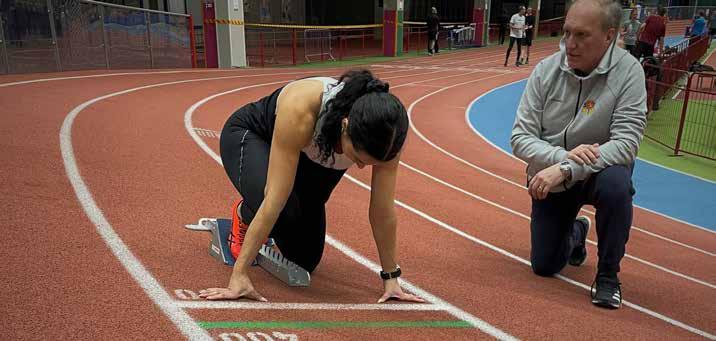
athletes, mostly at national and international level. I also give time to my sports club and sit on the board of the Finnish Athletics Association. For me coaching is completely different from work, and that’s the rewarding part. We have collected around 80 medals in Finnish and European competitions. Having said that, coaching and managing a company are similar in some ways. How you handle individuals, how you mentally build the team, how you grow and enjoy success and handle injuries are all from the same sort of skills!
Apart from that I am also active in the education world and support the link between universities and business, and I love music. Sadly I don’t have time for that these days – for one thing I live in the countryside east of Helsinki and when I’m not working there are a lot of grounds to take care of!
DN: What do you consider to be the most challenging short, medium and long-term things you need to handle, as you look ahead?
LF: I spend lots of time thinking about the business. One major item currently is green energy. We might be in a recessionary business cycle with costs rising, but energy supply goes well beyond the immediate problems. The world needs to find better, cleaner ways of energy usage. We are also currently still fighting some supply chain issues and trying to balance resources and skills.
Down the road, we have no reason to change what we believe in: we are moving in a rewarding direction that gets good business results. The widening of our portfolio following the integration continues; that sort of thing doesn’t happen in a couple of years, and it’s also connected to many other parts of the business and market trends, so it solidifies as it goes on. Our customers are putting greater value on partnerships and, as a result, are developing different business forms and methods. Ten years ago, partnerships in research and development were much more restrictive, but today things are changing quite rapidly. The market will be very different again in five to ten years. Many of things we have been doing in recent times fit into that scenario very strongly, so on balance I have a very positive view of the future.
DN: Thanks Lars. It’s been really encouraging to hear some of the things you have said. As an association with 250 members, the IWMA has many different things in mind, but a lot can be done in the next few years to serve members better. We hope people like yourself will tell us when we get things right – and where we need to do things another way!

GmbH & Co. KG
CSM Metalurji Imalat Sanayi Ve Muhendislik Ltd sti 147
EDER Engineering GmbH
FMS Force Measuring Systems AG 2229
Mexico will be the next country to play host to Messe Düsseldorf’s annual round of wire and cable fairs, with the new wire Mexico coming up at the CINTERMEX Centro Internacional de Negocios in Monterrey, as a pavilion within the long-established trade fair Expo Manufactura (January 30-February 1, 2024).
The international trade fair for manufacturing technology, automation and robotics has been held annually since 1996. Organised by Tarsus Mexico, it is the country’s leading manufacturing trade show. The most recent event –in February 2023 – had 600 brands across 330 exhibitors and admitted 15,500 visitors from 26 countries, primarily machinery manufacturers, suppliers, metal fabricators and the electrical and automotive industries. Mexico is major market in its own right, with a population of over 130m, large oil and gas reserves and rich mineral resources.
The move by Messe marks Mexico out as a growing player in the international wire and cable market, with its own industry bouncing back from Covid with a projected annual growth rate of around three per cent for the rest of the decade. The growth will be coming partly from government infrastructure and energy projects, as well as the more usual automotive and electronics industries, all of which promote a strong demand for wire and cable. But Mexico also
enjoys a strong strategic position within the Americas: the United States-Mexico-Canada Agreement in 2020 helped to cement Mexico’s industrial contribution to the larger US economy and, allied to the search for “local” manufacturers to shorten supply chains, gave many companies the reason they needed to set up facilities there. Similar agreements over the years have offered duty-free trade between the EU and Mexico.
“Mexico has become very important as a supplying industry partner for the US market, but it also has a very substantial and vibrant domestic industry base of its own,” said Friedrich-Georg Kehrer, Messe Düsseldorf’s Global Portfolio Director for Metals and Flow Technologies. “That’s one of the reasons why we will also do wire Mexico next January. We are looking forward to welcoming many Mexican trade visitors for both events…”
IWMA Chairman, Don Neville, will be at wire Mexico as Industry Partner to Messe Düsseldorf, “Demand for wire and cable products makes Mexico a key growth market, spurred by government and business investment,” said chairman Don Neville. “Being part of the larger manufacturing trade fair means IWMA can offer members a huge opportunity for access to key
in these markets.”
At booth 130, Rosendahl Nextrom will exhibit a ROEX extruder of the latest generation, the core of each Rosendahl extrusion line. This machine delivers high performance with superior linearity and output at low energy consumption. It will be displayed with a fitting crosshead.
Moreover, the company will present the latest advances in manufacturing technology for the cable and wire industry. Rosendahl Nextrom’s portfolio includes solutions and equipment for extrusion, SZ-stranding, corrugation, and foaming, including powerful smart solutions for their lines.
www.rosendahlnextrom.com


FMS is regularly exhibiting at trade shows and congresses all over the world. Would you like to meet with our Sales Manager during an event?
Contact us:
USA
Tel: + 1 847 519 4400 fmsusa@fms-technology.com
The Conoptica team are attending wire Mexico 2024 in Monterrey from 30 January – 1 February. We would like to invite you to join us for a live demonstration of our instruments! This is a brilliant way for you to ask technical questions, get to know us, and see how our systems operate.
Send us a message below with a suitable date and time for you, and we will schedule you in for a one-on-one demonstration!
conoptica@conoptica.com


29th November 2023 - The International Cable & Connectivity Symposium (ICT Monterrey, Mexico), hosted by the Wire Association International, was the ideal venue to unveil wire and tube’s latest lubrication technologies from Metalube, showcasing the Alumol, Tubol, and Lubricool product range to industry leaders and enthusiasts alike.
The conference, a convergence of key players in the wire and tube sectors, was abuzz with discussions revolving around technological advancements and sustainable practices. The event was attended by Metalube’s Global Product Manager, Albert Molloy who highlighted the considerable benefits of Alumol, Tubol, and Lubricool that left a lasting impression, setting a new benchmark for performance, efficiency, and sustainability in wire and tube lubricant arena.
“ICT provided us with an ideal platform to meet people from all over South America, a key region, where we are keen to expand our presence. It has enabled us to open lines of communication with major players across the territory.” commented Albert Molloy, Metalube’s Global Product Manager. He adds: “The innovative solutions presented emphasise a vision for shaping the future of wire and tube lubrication. Alumol, Tubol, and Lubricool represent a fusion of cutting-edge technology and sustainable practices, promising enhanced performance, reduced environmental impact, and greater operational efficiency for industry players worldwide.
Metalube, a global leader in lubrication engineering, specialises in the development and manufacturing of high-performance lubricants for various industries. With a commitment to innovation and sustainability, Metalube continues to push boundaries, delivering cutting-edge solutions to meet evolving industry demands.
www.metalube.co.uk
2023 was the year international travel and the exhibition calendar got back up to speed.
The four wire and cable events were perhaps not fully representative of a typical pre-Covid year, for two of them were new and untested; but the biggest, wire China, came through as expected with a strong line-up and over 40,000 visitors.
The first show of 2023, wire (and Tube) Eurasia in Istanbul in May, was part of a group of exhibitions (with wire TECH Istanbul and Tube & Steel Istanbul) at the Tüyap Fair Convention and Congress Center.
The fair acknowledged the growth in the wire and tube markets in the region and opened a new national market for manufacturers. From Istanbul there are short trade routes to countries in the Near and Middle East, as well as Central Asia.
The event didn’t disappoint, with 210 exhibitors and 10,000 visitors from across Turkey and its neighbouring countries.
“It was a promising start to the premiere in Istanbul,” said Bernd Jablonowski, Executive Director of Messe Düsseldorf. “There was a positively-charged atmosphere in the halls from the start. The four days of the fair showed that Turkey is a supra-regional hub for the wire, cable, tube and pipe industries.”
IWMA executive management committee member Stuart Duff and the team were present on the IWMA information stand to offer visitors details of membership benefits and to answer questions.
“The fair gave both global players and medium-sized companies the perfect opportunity to introduce themselves on the Turkish and Asian markets, where there are excellent development opportunities,” he said. The shows will return in 2025.
There was a convincing premiere too for wire and Tube Middle East Africa in Cairo (September 2-4), again
alongside partner shows GIFA and METEC; all four within Cairo’s major industrial exhibition Metal and Steel Egypt, at the Egypt International Exhibition Center. Egyptian trade fair organizer AGEX (Arabian German Exhibitions & Publishing Ltd) has held the Metal and Steel Egypt trade fair since 2010.
The new shows offered many first-time exhibitors the chance to invest in growth markets Egypt, the Middle-East and North Africa, and 383 exhibitors from 19 countries took up the opportunity. As well as local companies, exhibitors from the UK, France, Austria, Belgium, Turkey, Spain, Switzerland, Morocco, the USA, Germany and others also had a presence.
There was strong interest in the halls from the start of the five fairs, with over 7,000 visitors – around 10 per cent of them from outside Egypt – in Cairo over three days to network and observe trends and innovations from the industries.
IWMA chairman Don Neville commented:
“The exhibition drew an encouraging number of international and domestic exhibitors. As a first-time event it provides an excellent baseline for the next show in 2025. The overall initial experience was very encouraging.”
All five fairs will return in the first half of 2025, offering a unique opportunity for manufacturers and specifiers to discover the latest ideas, processes and machinery under one roof.
The biggest fair of the year, the 10th All China, International Wire & Cable Industry Trade Fair (otherwise known as wire China 2023), jointly organised by Messe Düsseldorf (Shanghai) and Shanghai Electric Cable Research Institute, opened at the Shanghai New International Expo Center on September 4.
Over the four days the huge Chinese section of the industry presented its latest technologies, products and ideas, including opportunities for digitalisation and environmental protection. The show also encompassed pavilions dedicated to exhibits from Germany, Italy, France, Korea, Japan and China-Taiwan.
wire China has become the largest wire and cable industry event in Asia after 19 years of growth, in 2023 attracting more than 900 domestic and overseas exhibitors and 40,629 visitors from 96 countries – over 30% more than in 2018.
The exhibition had five major themes: innovative equipment empowered by digital intelligence, green and low-carbon solutions, precise measurement and control technology, high-quality wires and cables, and auxiliary processing and supporting equipment. The organisers collaborated with government agencies, industry associations and financial institutions to launch several professional forums and conferences, creating business opportunities and building bridges for cooperation. Two major industry conferences, four thematic forums and over 40 thematic discussions were packed with hundreds of participants.
Daniel Ryfisch, Director of Global Portfolio wire/Tube & flow technologies for Messe Düsseldorf echoed many when he spoke of his excitement at being back at wire China after the show’s three-year hiatus, post-Covid. “We are very optimistic about the development prospects of China’s wire and cable industry. The success of wire China reflects the market resilience and reinforces its position as a first-class international trade & exchange platform,” he said.
wire & Tube China will be held at the Shanghai New International Expo Centre (SNIEC) from September 25-28, 2024.
The final show of the year saw IWMA again attend wire Southeast Asia at BITEC in Bangkok in late September –the most authoritative trade event for the wire and cable industries in the region, alongside partner events GIFA and METEC South East Asia.
Amid rapid urbanisation, infrastructure development and increasing internet penetration in Southeast Asia, the demand for wire and cable has been on upward trajectory. In 2022, the Asia-Pacific region held the largest revenue share – over 37 per cent – in the wire and cable industry. With infrastructure development being the focal point for Southeast Asia on the back of the pandemic, the region continues to assert its global significance.
Over three days the fair, and its accompanying Tube South East Asia show, saw 254 exhibitors from 27 countries demonstrate their technology, machinery,
and innovations across multiple application sectors to 6,350 trade visitors, 24 per cent of them from overseas.
Beyond showcasing innovations and solutions, the exhibitions were also about knowledge-sharing. As well as IWMA’s usual presence, we partnered with Messe Düsseldorf’s Asian subsidiary to organise a conference on sustainable industry: Towards a Sustainable Future – Transforming Challenges into Opportunities. Key topics included sustainable growth and environmental responsibility – resonating with the region’s efforts towards economic growth paired with decarbonisation.
Commenting on some key points from the conference, IWMA chairman Don Neville said he was interested by some of the common challenges presented by the speakers. “Not just within this region but with other parts of the world too, despite the unique characteristics of each region, there are still fundamental common denominators, and that is something worth communicating and sharing in a conference setting such as this,” he said.
“This year’s show had the positive dimension of finally achieving an IWMA/MD Asia conference collaboration alongside having to contend with the challenge of drawing back exhibitors and visitors since the last show only a year ago. But the event was very positively received and has laid the foundation for refreshed exhibitor participation, now it’s back on an alternate-year schedule.
“Likewise, all the work between IWMA and MD Asia on this conference has made it possible to begin the formulation of an even more dynamic, diverse and widely-attended conference next time.”
Bernd Lohmüller was at the conference in his role as Managing Director of Maschinenfabrik Niehoff: “Positioning the conference on the show floor significantly enhanced the visitor experience,” he said. “The content was insightful – especially the contribution from the Thai presenters, who offered deep local insights.”
“Discussions on CO2 emissions-reduction and energy efficiency also resonated deeply – as lowering emissions invariably leads to reduced production costs. Overall, the concept of the conference greatly enriched the event.”
The next editions of wire and Tube Southeast Asia will return to a biennial cycle from September 17-19, 2025, again at BITEC.
The sector looks to Düsseldorf with anticipation, where the global No. 1 trade fairs for the wire, cable, tube & pipe industries will be staged from 15 to 19 April 2024.
In five months that time will have come and the industries will meet at Düsseldorf Exhibition Centre.
What makes it special: Sustainability and Energy Efficiency are even more in focus than in 2022. Daily ecoMetal trails touring the exhibition halls are aimed at convincing visitors of exhibitors’ novel, clean production methods.
Trend forums, expert meetings and themed pavilions for stainless steel, hydrogen, other regenerative energy carriers, separating and cutting, plastic pipes & tubes and finished products for Fastener & Spring Making Technologies will be in focus.
Community building comes care of the daily After-Work Chill Meetings in the outdoor spaces and entrance Nord – here exhibitors can also meet their customers after trade fair hours over drinks and tasty Düsseldorf canapés.
Ranges on display at wire 2024 wire will be staged in exhibition halls 9 to 17 in 2024. It will be as big as ever, occupying some 66,900 square metres of exhibition space. With 1,026 exhibitors from 60 countries it will even surpass pre-pandemic levels.
On show will be machinery and equipment for the manufacture and processing of wire, finished products at Fasteners & Springs, tools and auxiliaries for process engineering, materials, glass fibre technologies, special wires and cable as well as innovations from sensor, control and testing technology.
In addition to wire and cable machinery producers, wire and cable products and glass fibre technologies, impressive wire mesh welding machines will be displayed in Hall 17. These pose logistics with particular challenges because thick cables have to be laid and connected in the supply ducts to transport the electric power this heavy machinery requires for its live operations.
Fastener & Spring Making Technologies and their finished products in Hall 16
Here the complete value chain for fasteners and springs can be found: from raw materials, machinery and equipment to fasteners, connectors and industrial springs. This once again makes #wire Düsseldorf 2024 a highly topical information and order platform for the producers, dealers and buyers of screws, brackets, construction components and fittings, all types of springs and wire bending parts.
Ranges on display at Tube 2024
Tube also enjoys excellent booking levels. So far, 768 exhibitors from 49 countries have registered. They will occupy a total of 49,600 square metres’ exhibition space in Halls 1 to 7.1.
#Tube 2024 presents the entire process chain of the tube & pipe industry – in a focused and compact array: machinery and equipment for manufacturing pipes and tubes, finishing and processing of pipes & tubes as well as raw materials, plastic pipes, tube products and accessories, used machinery, tools for process engineering, auxiliaries, sensor technology, control, measuring and testing technology all form part of the extensive ranges. This line-up is complemented by tube & pipe, pipeline, OCTG technology and profile trading.
International satellites in booming markets of the future
Over a time span of almost 40 years wire and Tube Düsseldorf have developed into the leading trade fairs for their industries – now also “giving birth” to satellite events on the #Wire, #Cable and #Tubes & Pipes themes. In their regions, they are the market leaders and drivers for the local industries and boast high growth potential. Satellites in Turkey, Egypt, Mexico, China, Thailand and India now already form an integral part of the growing portfolio of the Metal and Flow Technologies made by Messe Düsseldorf.
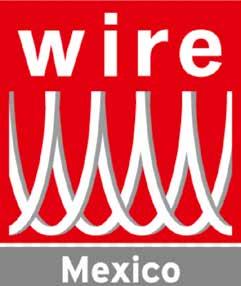

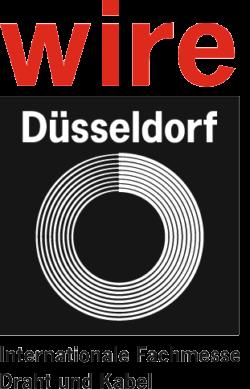



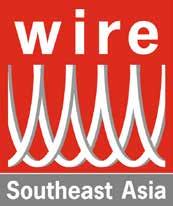
Advertising opportunity for members only with prices starting from as little as £200!
We are now offering exclusive advertising slots in our quarterly IWMA Insider magazine! Advertising space is limited in each edition and will be allocated on a first come, first served basis.
The benefits of magazine advertising are huge, and we wanted to offer our members an even greater opportunity to hit their target market and get noticed in our industry magazine. We’re pleased to be able to offer FREE editorial slots for all members, as well as the above advertising opportunities.
March Edition
PR/ Editorial deadline date: 12th Jan
Advertisements deadline: 24th Jan
June Edition
PR/ Editorial deadline date: 3rd April
Advertisements deadline: 24th April
September Edition
PR/ Editorial deadline date: 3rd July
Advertisements deadline: 17th July
December Edition
PR/ Editorial deadline date: 4th October
Advertisements deadline: 18th October
For more information, please contact Katie at katie@iwma.org
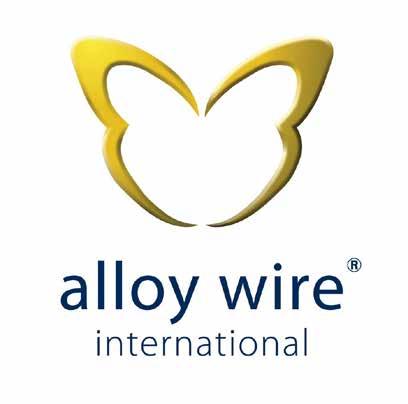

One of the UK’s leading manufacturers of round, flat and profile wire is on course to celebrate a record year –less than twelve months on from an MBO designed to protect the ‘unique values’ of the business.
Alloy Wire International, which was formed in the Black Country more than 77 years ago, has seen sales rocket by £3m since the deal was completed in January, taking turnover to £18m with the prospect of it breaking £20m in 2024.
been behind the initial boost, but the now Chairman Mark Venables is adamant that the firm’s commitment to extending the employee-ownership of the company - and the culture this brings with it - will drive the ongoing success.
The former Managing Director is delighted with the decision the management team took two years ago to look for the future owners from within, with long-term staff members Tom Mander, Adam Shaw and Andrew Du Plessis leading the successful MBO.
A complex process was made easier by expert advice from Dudley-based Acorn Support, who provided an external sounding board for the decision-making and put in place psychometric testing to identify key personalities, emotional behaviour traits and ability to work in a team.
“We knew we had some very talented individuals in the business, and it was always our ‘gut feeling’ that the next owners would come from within. The work we did with Acorn gave us a clear insight into future roles and the confidence that Tom, Adam and Andrew had the necessary skills, personalities and characters to make it work.
“This accelerated succession planning led to the MBO, which has proved an overwhelming success. Alloy Wire International is in very safe hands and, importantly, has a management team in place that has new ideas and new innovations that will continue to facilitate our growth, whilst also staying true to our ‘employee-owned’ culture that has governed the last seventy-seven years.”
Founded in 2009, Acorn Support works with directors, managers and their teams to help each individual shine, be their best and deliver results for their companies.
Owner Claire Lawton held several thought-provoking conversations with AWI before bringing in Jackie Casey Consulting to help with defining the roles of the future board of directors.
“These descriptions helped identify areas of success for the business now and in the longer-term, not to mention highlighting the characteristics each role required,” explained Claire.
“We profiled each senior manager using a psychometric personality assessment and provided feedback that gave them the opportunity to learn more about their personality traits, their strengths and preferences when working together. It also highlighted how their personality impacted on their emotions and behaviours in the workplace and provided a common language for working together as a team.”
She continued: “The reports were then matched against the pre-defined job descriptions for the new board of directors, making it clear to see the alignment of the team to their potential roles and areas for development.
“It also helped Mark Venables identify his own skill requirements, so that he would be ready to hand over the reins as Managing Director and transition into the role of Chairman.”
Alloy Wire International was able to make the senior appointments it wanted 12 months earlier than expected and with 100% confidence the right decisions were being made.
In fact, their progression to the next stage did not take long with a full Management Buy-Out completed in January this year.
Tom Mander, Managing Director of AWI, concluded: “The first eleven months have gone better than expected and we’ve put some exciting plans in place, including a £500,000 investment drive in new machinery that will boost our capacity and ability to continue to deliver 3-week lead times on our range of 62 High Performance alloys.
For further information, please visit www.alloywire.com or acornsupport.co.uk
“Every member of our 33-strong team are owners of this business, and this translates into how ‘we do manufacturing differently’.
DLB Oberviechtach needs 12 GWh electrical power per year and our company is the biggest power consumer in Oberviechtach. The major target of our town is to become mainly independent from external power supply by 2030.
In October 2023 the biggest single investment in the history of our company has been finished. It is a Photovoltaik-Power-Plant with a peak power of 5,5 Megawatt.
We installed it on the roof (6.000 m²) of our factory and on our field (20.000 m²) next to the factory. In future we can run our wire factory during the day without any power from the utility. On sunny days we can even provide up to 3 MW to the public power-network.
Together with this project, other equipment we invested in already, and new projects will help us to become a leader in our business regarding the CO2-Footprint and to create a good future for our kids. Albin Dickert www.dlb-ovi.com/en/company
Metalube, a UK-based manufacturer of specialist industrial lubricants and greases for the wire industry, is delighted to end 2023 with a reflection on a highly successful year, where sustainability has remained a significant commitment for the business.
Earlier this year, Metalube received recognition at the Salford Business Awards and achieved Ecovadis ‘Gold’ status underscoring the company’s steadfast commitment to environmental responsibility and sustainable business practices.
These acknowledgments were a testament to the leadership of the company’s Owner and Managing Director, Robert Brown. In the wake of these prestigious awards, Metalube was invited to share its insights and experiences at wire Southeast Asia 2023 by IWMA and Messe Düsseldorf Asia.
Robert Brown expressed his gratitude, stating, “We are truly honoured to have the opportunity to speak on our journey to carbon neutrality. This acknowledgment reinforces our dedication to driving positive change within our industry.”
Building on this success, Metalube continued to make waves in the industry, earning an invitation to speak
at ‘Energy Innovates,’ an event hosted by IWMA at the renowned ‘Exchange’ centre in Birmingham. Once again, Robert Brown emphasised the honour of being recognized among industry professionals, stating, “It is a great privilege for us to share the stage with other visionaries in the wire industry and contribute to the discourse on innovation and sustainability.”
Metalube’s commitment to sustainability extends beyond accolades and speaking engagements. Throughout the year, the company has implemented initiatives to reduce its carbon footprint and enhance its overall environmental impact.
As Metalube looks forward to another year of growth and progress, sustainability remains a guiding principle in its mission to shape a greener and more responsible future for the wire industry.
Metalube, a global leader in lubrication engineering, specialises in the development and manufacturing of high-performance lubricants for various industries. With a commitment to innovation and sustainability, Metalube continues to push boundaries, delivering cutting-edge solutions to meet evolving industry demands.
www.metalube.co.uk
Industrial induction heating expert EFD Induction and inductive charging and power supply innovator IPT Technology now form ENRX. The new company is represented in more than 80 countries and holds over 1,200 patents for induction technology. By bringing out the best of induction technology, ENRX is determined to speed up the journey to cleaner and greener manufacturing and mobility.
Ready to change the game
The manufacturing industry is shifting toward ecofriendly and more efficient industrial heating systems. As induction heating is accurate, controllable, fast, and repeatable, the technology is perfectly suited for smart factories driven by an Industry 4.0 approach. Industrial induction heating also promotes safe and healthy workplaces, and the technology has been proven for decades.
“We are a new company with more than 70 years of experience in induction heating,” says Bjørn Eldar Petersen, CEO of ENRX. “Last year was record-breaking for EFD Induction. We passed our forecasted order intake for the full year in October. We now have a new brand, ENRX, and many products in the pipeline. The future looks bright for us.”
The right energy can take you anywhere Mobility is the other focus area for ENRX, and IPT Technology has been a pioneer in this field. The world of mobility is going wireless, and ENRX pushes the evolution further by removing the need for cables. Inductive charging of buses, cars, ferries, and trucks is convenient for users and requires virtually no maintenance. The same technology can be used in factories and warehouses to charge mobile equipment, robots, and vehicles. Another offer from ENRX is contactless power supply, where power is transferred instantly to tracks used for everything from conveyor belts to amusement rides.
“Inductive wireless charging and contactless power supply are technologies for the future,” says Magnus Vold, CCO of ENRX. “In the new world that is emerging, everything is based on automation, digitalisation, and electrification. With our portfolio of inductive charging and power supply systems, the only limit to what can be done is imagination.”
Speeding up the journey
ENRX aims to speed up the journey to a sustainable world through smart energy transfer. By offering technology for inductive heating, charging and power supply with low or no carbon footprint, ENRX provides value to companies worldwide in manufacturing and mobility. The vision for the company is: “When people look back, they will find that we were years ahead.”
“We believe that the right energy can take you anywhere,” says Inggard Torvik, CTO of ENRX. “Both in terms of what we do for our customers and how we interact with them. We know that change is always likely to meet some resistance, but there is simply no turning back within manufacturing and mobility. Instead, companies and organisations that act now are likely to be much stronger in the near future. We are ready when they are.”
ENRX has a turnover of 135 MEUR and 1,100 employees. The headquarters are situated in Skien, Norway.
www.enrx.com
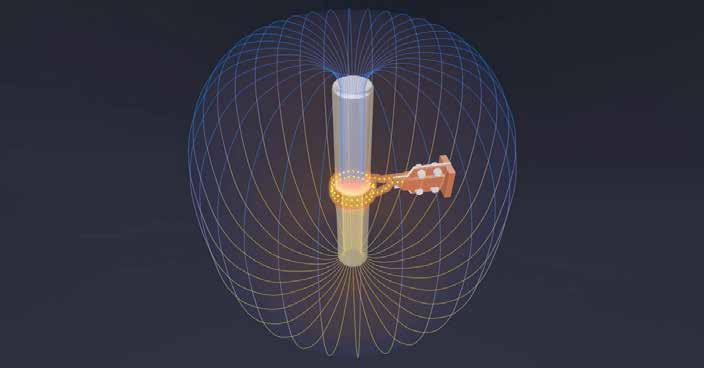
Haggie Wire and Strand is a leading South African manufacturer and supplier of concrete reinforcing products. Established in 1921, the company has grown and evolved over the years to become a leading supplier of high-quality wire products.
With a strong commitment to innovation and customer service in today’s fast-paced manufacturing industry, upgrading their machines is a necessary step for improving efficiency, productivity, and safety. One of the major challenges faced by Haggie Wire and Strand is maintaining ageing equipment that is prone to breakdowns. Here we will discuss how SA Power, distributor of FMS in South Africa, has assisted with the upgrading of some of their machines, the process involved while maintaining production demand.
The necessity to upgrade
The rotating cable machines were using traditional slip ring systems. These require frequent servicing and regular inspection of the brushes on the slip rings. They are prone to mechanical wear and tear.
The FMS system provided a wireless solution replacing the slip rings. It is a low-maintenance system only requiring the recharging and replacement of remote batteries on a four-day cycle.
First step was preparing the functional specification
The first step when proposing such solutions is the preparation of the Functional Specification. This is carried out in close collaboration between Engineers from Haggie Wire and Strand and SA Power and clearly defines the requirements and expectations of the upgrade. In addition, the role of each party during the upgrade. This is essential to manage communication and expectations.
In this case it required the replacement of slip-rings with a wireless solution.
Once the FS is completed, budgets, orders and resources are allocated to undertake the upgrade.
using FMS
The upgrade involved removing the slip rings and installing two FMS-cradleGUARD receivers between the six cradles. An FMS-cradleGUARD transmitter was installed at each cradle. All safety proxies and line break proxies were wired from the pintle to each transmitter on each cradle.
The receiver’s outputs were wired into the machine safety and other signals which were tested and certified completing the upgrade.
During the upgrade process, it is essential to maintain productivity and meet demand to avoid any significant disruptions to the production process. This was done by carrying out the upgrade in phases where only a section of the machines was taken offline at any given time.
The upgrade process was planned for off-peak production periods to minimise the impact on production levels.
Summary
In conclusion, upgrading client machines is a necessary step for improving efficiency, productivity, and safety in the manufacturing industry. The upgrade process involves securing necessary resources, removing old systems, and installing new systems. Strategies for maintaining productivity and meeting demand during the upgrade process include carrying out the upgrade in phases and scheduling the upgrade process during off-peak production periods. By implementing these strategies, manufacturers can upgrade their client machines while minimising the impact on production levels.
www.fms-technology.com/en


At an opening ceremony, held at its new facility in Denton, Texas, MademMoorecraft, along with its employees, welcomed everyone to celebrate our grand opening.
In attendance were city officials including Mayor Gerard Hudspeth, Cole Frazier from the Local Chamber of Commerce, Joe Holland (Denton County District Judge), Brian Beck from Denton City Council and Jeff Coulter representing Michael Burgress, with the U.S. Congress as well as customers, suppliers and shareholders.
The completed first phase, of the new Denton plant, increases Madem-Moorecraft’s total current production capacity by 50% (150 truck loads of kits / month). Next year, phase 2 will be completed and provide an additional 50% capacity increase. The total investment will exceed $14,000,000 USD and create over 100 jobs.
Madem-Moorecraft currently supplies wood and plywood reels to 42 cable manufacturing plants in the United States.
“We are very happy with the growth of our production in the United States and we appreciate the partnership with our customers. We will continue to strive towards excellence in our products and services.” Gino Francesco Mazzoccato, President of Madem Group.
“Our most advanced industrial engineering project has just started materializing in Denton, TX. This manufacturing system is made up with innovative machinery, and brings pride to the Madem-Moorecraft team and Madem Group worldwide. It all has been designed to deliver unparalleled wooden and plywood reel experience to the North American cable industry.” Marcos Conde Ramalho President of MademMoorecraft Reels USA.
“We are thrilled to celebrate the opening of our new manufacturing plant! Denton represents a key gateway and foundation for future expansion of our distribution network.” Stephen Redhage Vice-President/General Manager of Madem-Moorecraft Reels USA.
“The Denton team is very excited for the future of this facility! We could not have done this without the support from the Tarboro North Carolina team and The Madem Group team in Brazil!” Josh McCoy General Manager of Madem-Moorecraft Reels USA Denton,TX plant.
The Madem Group is the world leader in wooden reels manufacturing, supplying to more than 200 cable industries over 45 countries. It encompasses manufacturing and distribution facilities in Brazil, Colombia, Mexico, USA, Spain and Bahrain. www.mademreels.com
Nordson Measurement & Control Solutions (formerly NDC Technologies) solves the tracking problem of bouncing, moving products on steel and copper wire drawing lines.
Laser Doppler Velocimetry (LDV) has been a longproven method for accurately measuring the length and speed of products. But many applications involving the drawing of long, continuous wire pose measurement challenges. Drawn wire that cannot be well-guided, moves off-axis and out of the measurement range can be problematic for traditional LDV-based gauges trying to keep the laser on the product’s surface. These measurement issues can dramatically affect the ability to control product speed, achieve accurate cut-to-length requirements, and other critical functions during the wire drawing process. Moreover, unreliable measurements can be costly due to product give-away, waste from scrap, process downtime, and other conditions.
Nordson’s patented LaserSpeed Pro M Series gauge solves these problems. It features a revolutionary LDV optical technique to provide highly reliable, highly accurate (up to 0.05%) speed measurements of small, bouncing, unguided drawn wire. Moreover, the LaserSpeed Pro M Series works at high line speeds for extremely responsive velocity measurements to control elongation from stand to stand and throughout the drawing line. This technology is extremely valuable in applications involving roughing, intermediate, pre-finish and nontwisting mills, reducing and sizing mills (RSM) and stations, including wire laying heads. Manufacturers benefit by producing a higher quality wire while significantly reducing the possibility of line cobbles. This increases the lifetime of the mill guiding elements, including the wire loop shaper. Other production savings include a reduction in material waste, operational downtime, and frequent periodic maintenance.
For more information about the LaserSpeed Pro M Series gauge www.ndc.com/betalasermike
KARACHI: Pakistan Cables launched the nation’s first highest voltage (69KV) CCV line for Medium Voltage (MV) cables through world class German technology. As the pioneer in the wires and cables industry in Pakistan, the company has a legacy of breaking barriers. In addition, Pakistan Cables has also set up a High Voltage Testing (HVT) facility at Nooriabad, which enables testing of cables at higher voltage grades.
“This is a significant milestone for the company during its 70th year anniversary. It reflects 70 years of uncompromised dedication and setting Industry benchmarks. I am thrilled at the outcome and proud of our team, who drove the project with a lot of hard work.”, said Fahd K. Chinoy, Chief Executive Officer Pakistan Cables Ltd. www.pakistancables.com


The double twist stranding machines D 1252, D 1602 and D 2002 from Niehoff
Maschinenfabrik Niehoff has been developing and building rotating machines for the cable industry for around 60 years, including the double twist bunching and stranding machines of the D series. This series now consists of eight different sized models, designed for conductor cross-sections from 0.013 to 500 mm². In recent years, the double twist stranding machines types D 1252, D 1602 and D 2002 were added*.
These three machines enable cable manufacturers to produce cables with larger dimensions, which are more and more required with the worldwide growing demand for electrical energy. The machines are designed to strand insulated wires and to strand and compact conductor constructions for power cables, flexible control, connection and motor cables as well as steel wires.
The D 2002 is the largest model of the series. In combination with an external rotating pay-off type PTD 1000 it is able to strand up to 61 conductors together. The machine accepts spools with a flange diameter of 2m and a weight of up to 12t. The machine is designed for processing wires with a diameter of 1.5 to 4.8mm into strands with a cross-section of 16 to 400mm² (Cu) or 500mm² (Al). The lay length is continuously adjustable from 50 to 500mm, the maximum number of twists is 1000 twists/min, the production speed is up to Interior of the D 2002 type double twist stranding machine
150m/min. The strands can be compacted, whereby a degree of compaction of up to 13% is possible.
The D 1252 model was the first machine of this series and brought to operational maturity in 2018. It is a further development of the D 1251 but more adapted to specific applications. While both machines can strand conductors with a seven wire construction, for example 7 x 3.05mm; the D 1252 can also produce conductor constructions consisting of up to 19 wires. The D 1602 model is specifically designed for conductors of this kind.
Energy-saving design and optimum conductor path
Like all machines of the D series, the three new models are characterized by the energy-saving onebow design, which has proven itself in practice. The equipment also includes an energy-saving rotor drive of the energy efficiency class IE3 and a thermostatcontrolled fan drive in the soundproof cabin which works depending on the temperature within the cabin. During the design of the machines, attention was paid to optimizing the conductor path. Gentle treatment is achieved, among other things, by the fact that all pulleys and capstans have large diameters. From the second deflection pulley to the haul-off capstan the conductor path is straight, which also contributes to a high conductor quality. The conductor can be compacted via a driven rotating compacting die with die lubrication.
The automatic laying system (NBAT) with flange detection system allows spools to be wound perfectly. Therefore, even at high speeds, the wound conductors can be paid off for further processing free of loops and without damage.
Easy operation and simplified maintenance
The ergonomic criteria was taken into account in the design of the machine: All three machines have a working height of 1300mm, which simplifies the operator’s work. The machines are operated via the Niehoff Machine Interface (NMI), a networkcompatible HMI interface with colour touch screen. The screen displays notes and instructions, stored recipes, system status messages and other information in the operator’s language.
Wireless telemetry for all signals including encoders and the absence of slip rings increase production reliability and simplify maintenance.
Industry 4.0 and myNIEHOFF
The machines monitor the quality of the stranding process, for example the temperature of the rotor bearings and the vibration of the rotor. Machine and process data can be recorded, documented and evaluated via the myNIEHOFF web app according to Industry 4.0. Users of these machines can thus prove the product quality to their clients in writing.
* The type designations indicate the maximum spool size for which the machines are designed.
www.niehoff-gmbh.info/en/
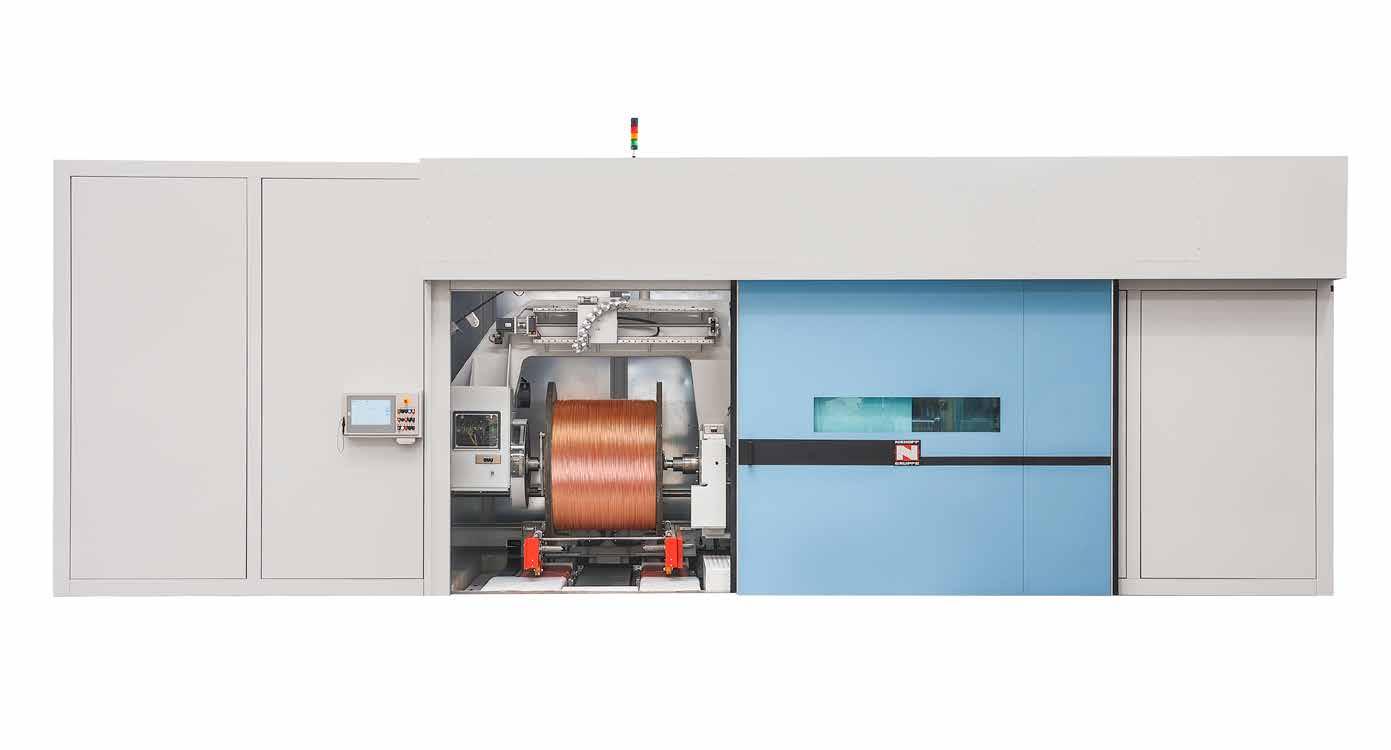
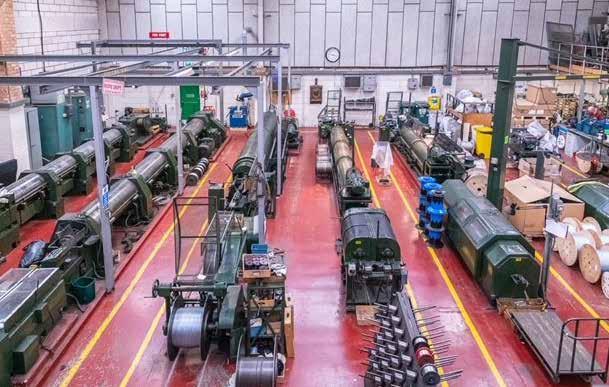
Established in 1793, Ormiston Wire has survived being bombed out during the Second World War, a global pandemic, Brexit and a significant reduction in British manufacturing.
Founded by Scotsman James Ormiston in the City of London, the business started out making spring wire for corsets and wigs.
Its rich 230-year history has seen the reign of ten kings and queens and sixth generation Chairman and Managing Director, Mark Ormiston, credits their continued keen focus on the future for keeping Ormiston in the wiremanufacturing game both in the UK and through exporting worldwide.
“After the recession of 1989/1990 hit, the company started looking at ways we could save money and be more sustainable,” said Mark.
“We were emptying our skips weekly and I asked why we needed to do it weekly, why don’t we save our money. We were putting our packaging into the skips and using brand new boxes to send it out, so we decided to recycle the packaging the raw materials came in to send our products out. Now we only empty our skip once a year.
Our metal is recycled, our cardboard boxes are reused, and our pallets are used for fuel.”
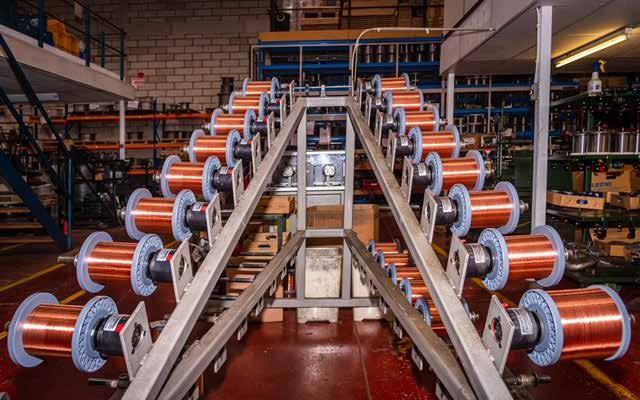
All the team’s hard work paid off and, on top of saving the company significant costs and with the addition of solar panels, LED lighting, triple glazing and wind turbines in 2003, the firm received the Queen’s Award for Enterprise: Sustainable Development.
“When people talk about becoming more sustainable and energy efficient now, we were doing it 20 years ago,” he added. “We were ahead of the game.”
Ormiston Wire manufactures a range of different types of wire e.g. strands, braids, bunches, for a wealth of uses. These include suspension wire and superclamps, used particularly in the retail sector, and art and sculpture installations. They supplied the wire for the art installation at Heathrow Airport which featured 300 brightly coloured umbrellas at the airport’s T5 Arrivals. Ormiston is an approved manufacturer and supplier to the military, provides wire to the marine industry, and they have been manufacturing wire turbulators used for heat exchangers since 1968 and have developed their own looped spiral design.
Keeping the staff happy in their work is what Mark says is the company’s secret to success.
The firm has seen several changes to working conditions in recent years, for example, moving to a four-day week by closing Fridays and closing shop at 3pm Monday to Thursday.
“The staff are really happy with a four-day week, we have done it for three years now,” added Mark.
“We have a happy team, you have to enjoy going to work, you spend enough time there.
“One of the guys who works for us has worked here for 59 years. It’s important to us to keep our staff and keep them happy. That’s our secret. You have got to look after your staff and make sure they’re happy, pay them well and give them a life. That’s our philosophy which I learnt from my father.”
Mark, whose work experience prior to taking the helm at Ormiston Wire included being a member of the Territorial Army which gave him insights which he wouldn’t otherwise have gained, working in a factory in Sussex and gaining hands-on experience at a textile mill in Austria, said he looks beyond certificates and education when he takes on staff.
“I dropped out of college,” he said. “I believe in giving someone a job and see what they can do and that they can learn the job, they do not necessarily need certificates.
“In my father’s day, in the 1950s, we had 88 employees, we now have nine. This is the way British manufacturing has shrunk over the years. In 1950, 50% of employment in London was in manufacturing.”
“But we’re still in the game,” added Mark. “We have big expensive machinery, and we still make specialist wire for the UK and export worldwide.”
The recession in the 1980s led to their factory in West Ealing being sold and the smaller more efficient factory being purchased in Isleworth. The company’s manufacturing facilities are now in Isleworth and Redditch in the Midlands.
Every time the company has hit hard times, they have bounced back showing a steely resilience as strong as the wire they supply.
During the Cold War, 50% of income was supplying wire to the Defence industry whereas now it is the retail sector that benefits from the specialist wire Ormiston produces.
Over the years, the company has supplied wire to support the popular puppets, Thunderbirds, for the television industry and 18 miles of stainless steel wire strand for the rowing course at the Montreal Olympics in 1976.
“Things move on,” said Mark. “We have moved into supplying wire for retail units, suspended lighting in warehouses and art installations.”
As well as Mark at the helm, other members of the Ormiston family are involved in the business. His stepdaughter Karley Ormiston works in sales, Karley’s mother Pauline Ormiston is the company secretary and other family members are shareholders.
Mark has had the tale of supplying Guglielmo Marconi passed down to him through the generations. He said: “My grandfather’s brother said make sure that Marconi pays before you give him any wire!”
The wire sold to Marconi was used for his experimental wireless telegraphy. He is known for creating a practical radio wave-based wireless telegraph system.
And Mark’s grandmother, Dorothy Ormiston, ran the business throughout the Second World War as all the men had been called up to fight.
“She was a formidable woman by all accounts,” said Mark. “She died before I was born but I’ve heard all about her.”
Over the last few years, the company has, like countless others, had to ride the storm of both a global pandemic and Brexit but still has an annual turnover of £1.5 million and is looking to continue its success in future generations.
Ormiston Wire is a supportive member of West London Chambers and has spoken at a number of Chamber sustainability seminars.
www.ormiston-wire.co.uk
They will be selling the new type of heat welding machine BFHA-10A for rough drawn copper wire from October 20th 2024.
Product name: Heating pressure welding machine for rough drawn copper wire BFHA-10A
Overview: A fully automated automatic deburring device. Welding condition settings have been added to the well-established heat pressure welding machine.
Concept of new product BFHA-10
1. Easy = Welding condition settings which were previously done manually, can be done using the touch panel.
2) Smart = No human setting errors.
3) Reliable = Automatically sets optimal conditions for welding.
4) Simple = Automatic deburring, no manual deburring process.
BFHA-10 ensures optimal welding conditions by setting and registering welding conditions from the touch panel.
There is no need to manually change machine settings, and anyone can repeatedly perform optimal welding. Automatic deburring reduces welding process time.
Inquiries about product details can be directed to Fukase Shoji’s email address below: fukaseco@ja2.so-net.ne.jp
www.fukase-eng.jp
The 2023 scholarship winners are listed below along with the WCISA Member Company that they are associated with, either as an employee, intern or as a child or grandchild of an employee.
WCISA 2023 High School Graduate Scholarship Winners:
Ella Presnell, Chase Corporation, $750
Gabrielle Chasse, NuCera SolutionsChase Corporation, $750
Mia Shterengarts, Chase Corporation, $750
Libby Canipe, Chase Corporation, $500
Tara Radmard, Chase Corporation, $500
WCISA 2023 Employee & Intern Scholarship Winners:
Juliette Silahian, Chase Corporation, $750
Nathaneil McCartney, NuCera SolutionsChase Corporation, $750
The awards for each scholarship are to be used towards education expenses. The winners were selected by the WCISA Board of Directors, which reviewed all applications. WCISA offers three types of scholarships, as follows:
WCISA High School Graduate Scholarship, awarded annually for high school graduates with a parent or grandparent working at a WCISA member company.
WCISA Employee & Intern Scholarship, awarded annually for people working at a WCISA company.
WCISA Special Scholarship for extraordinary circumstances, awarded on a case-by-case basis.
Congratulations to all winners. The deadline to apply for the next round of WCISA scholarships is July 31, 2024.
www.wcisaonline.org
Permanoid is a leading British cable manufacturer, based in the heart of Manchester.
One of the few independently owned cable manufacturing companies in the UK, Permanoid has been producing high quality cables for over 70 years.
The company’s wealth of experience in cable design, manufacture and polymer technology has enabled it to develop a wide range of standard and bespoke cables used throughout the electrical, electronics and construction industries.
These range from small equipment wires up to complex multi-core cables, such as the BS5308 control and instrumentation cables used in the oil and gas sector.
In addition to this Permanoid supplies and continues to develop niche products in fields such as audio, medical, EV automotive, agriculture and aviation.
Commercial Director Oliver Hingston elaborates: “We continue to work with cutting edge companies in existing and emerging industries looking for bespoke cable products. These are typically highly specialised products with lower volumes which cannot be made elsewhere”.
One growing market is EV automotive, where global sales for battery electric vehicles (BEVs) and plug-in hybrid electric vehicles (PHEVs) is expected to grow by 35% in 2023 to reach 14 million. This is set to continue to rise as they become cheaper to own and more cost effective to run. “We see an increase in the need for cables for the internal wiring of vehicles, charging leads and EV charging stations over the next 5 to 10 years”, Oliver explains.
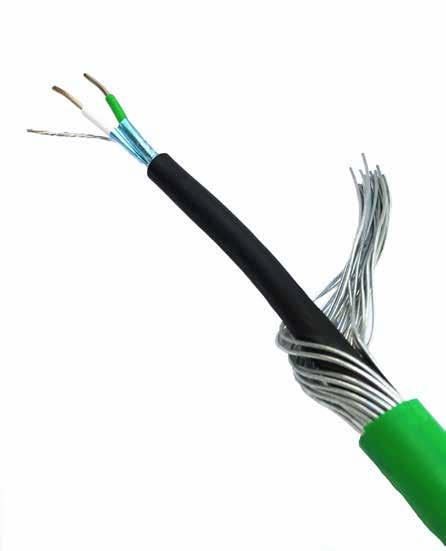
Another area the company supplies is the medical sector, where there was an increase in demand for specialised products during the Covid-19 pandemic. This included internal wiring for ventilators and bespoke products used in medical laboratory testing. Demand in this sector has now quietened post-pandemic. Conversely, the aviation sector which was hardest hit during Covid has now bounced back, with projects underway for the upgrade of airfield lighting systems.
Permanoid’s flexible in-house production facilities enable the company to develop its bespoke products and offer a unique and comprehensive service to its expanding customer base both in the UK and worldwide.
A three acre manufacturing plant in Manchester means that Permanoid is large enough to provide a substantial manufacturing capability, yet small enough to give excellent customer service.
Quality assurance also plays a vital role in all aspects of the company’s business. Permanoid’s quality system is certified to the demanding requirements of ISO 9001 and all cable is thoroughly inspected at every stage of manufacture. Many products are covered by third party certifications such as BASEC, UL and CSA. Cable is tested in-house and samples are sent regularly to the approvals board to ensure compliance with the relevant standards.
Permanoid is a founder member of the British Cables Association.
www.permanoid.co.uk
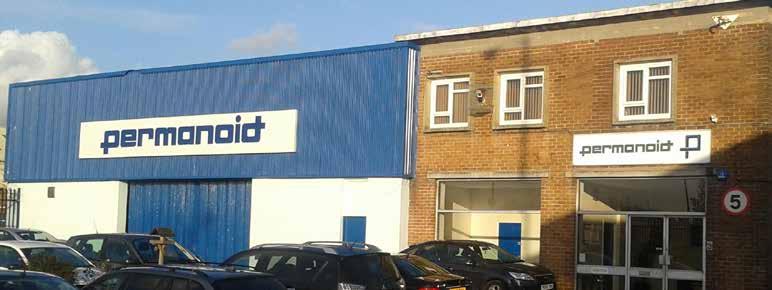
All-in-one packaging machine produces spools and REELEX at entry-level pricing.
REELEX Packaging Solutions, Inc., the creator and licensor of REELEX® twist and tangle-free packaging technology is releasing a unique all-in-one cable packaging machine capable of producing both linear and REELEX figure-eight winding patterns.
The S320e single-head take-up is based on the S320 dedicated REELEX machine, but uses a programmable traverse to wind cable in a linear or non-linear manner. This new machine allows distributors and cable manufacturers the opportunity to have one affordable packaging line produce a variety of different package configurations. Operated by a single operator to cut, remove and reload spools, the S320e offers a highly versatile and safety-conscious packaging machine that can be used as a “do-anything” take-up.
Timothy Copp, VP of Business Development at REELEX notes, “With a focus on operator safety and the latest controls technology, the S320e is ideal for cable manufacturers and distributors that are looking for a spooler but want the flexibility to produce other package types in the future. As an entry-level REELEX machine and priced as such, the S320e is an affordable way to have an all-in-one packaging machine suitable for a wide range of products.”
The S320e features a manual safety door which physically isolates the operator from the machine when running, dual-channel Category 4 safety devices to control hazardous energy sources and prevent unexpected startup, industry-standard PLC controls, and readily-available AC motors and drives. Like the other next-generation take-ups manufactured by REELEX and released in 2022, the S320e is paired with REELEX’s latest high-definition HMI touchscreen controls featuring an advanced interface, networking capability, recipe-based product selection and more. As such, the S320e offers a thoroughly modern single-head takeup designed for today’s safety-conscious production environment.
All S320e machines come with custom-made pintles and shafts as specified by the customer. Multiple spool sizes can be accommodated up to 200lbs (90kg), 20-inches wide (51cm) and 24-inches diameter (61cm). Maximum spindle speed is 750RPM.
www.reelex.com sales@reelex.com
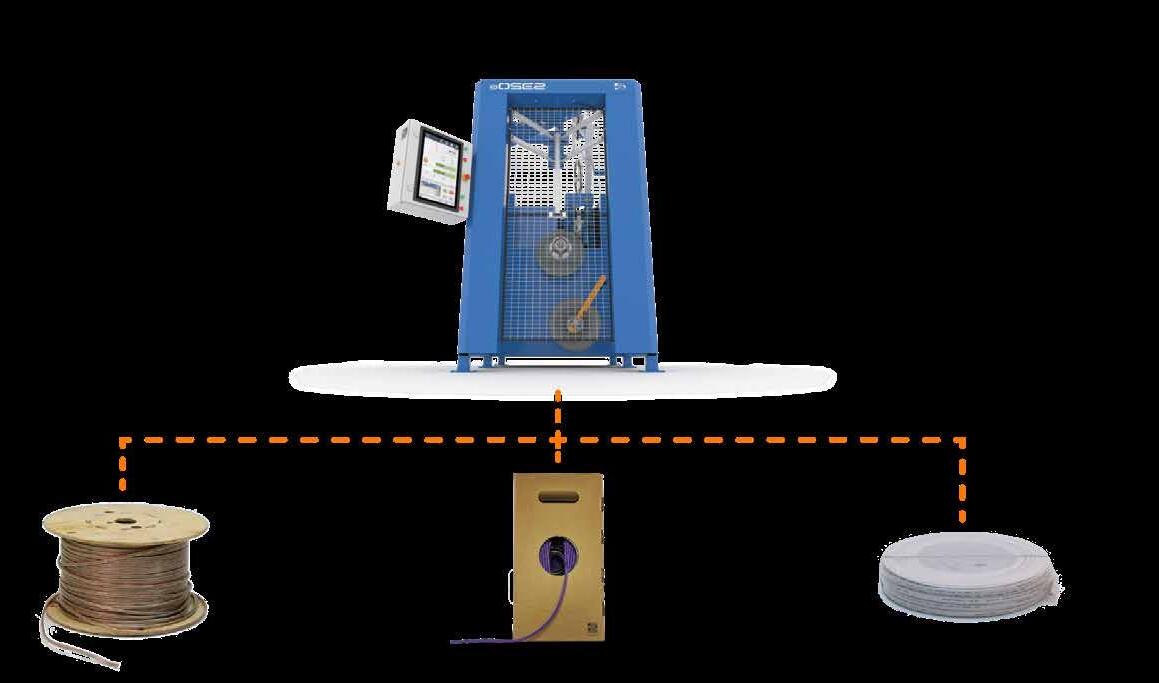
For Rosendahl, a front-runner in providing manufacturing solutions for the cable and wire industry, extrusion has always been a cornerstone of their expertise. Now, their commitment to excellence has reached a new level with Marc Richling as the new Director of Extrusion Technology.
Marc has been with Rosendahl Nextrom for two decades. During this time, he has established a reputation as a leading expert and made significant contributions to the company’s success. In his new role, he oversees a team of experts in process engineering and R&D, making him the go-to person for any and everything related to extrusion.
Nurturing emerging talent
Over the years, Rosendahl has evolved from an equipment supplier to a solution provider. Thanks to this transformation, the company nowadays delivers complete manufacturing processes from start to finish, including training for customers and operators.
When asked about his plans, Marc emphasizes: “Extrusion is already a niche within the field of polymer science, and cable extrusion is a niche within that niche. Expertise in extrusion isn’t readily available on the market. It is still partly an empirical science where experimenting is essential. While simulations, machine learning or artificial intelligence can streamline certain processes, the real magic happens on the factory floor. The cultivation of emerging talents and the growth of in-house expertise are therefore very important to us.”
As a result, Marc will increase the number of in-house experts dedicated to extrusion development. Additionally, he plans to collaborate with nearby universities and encourage and support more research on this subject.

R&D work never stops Looking ahead, the future of extrusion technology presents exciting challenges for Marc and his team. Shrinking product sizes, ever thinner wall thicknesses, and increasing speed lead to narrower process windows. Recipes are constantly changing. Environmental regulations are driving material substitutions, and sustainable alternatives such as biopolymers are gaining momentum. “As a solution provider, we proactively address these shifts by offering advanced processes to our customers,” says Director Marc Richling, underlining the importance of research and development in order to stay on top of the game.
One of Rosendahl’s most recent success stories, with Marc’s distinct contribution, is the world’s first turnkey extrusion line for hairpin insulation. During this project, he was responsible for mastering a high-end extrusion process by applying high-performance plastics with exceptional adhesion and mechanical resistance to rectangular conductors. The international interest in this brand-new solution is high. New developments are already in the works.
About Marc Richling Marc Richling studied polymer science and technology at the Montanuniversität Leoben. This set the stage for his career. From 2003 onwards he collaborated with Rosendahl Nextrom for his studies. During his research, he played a key role in developing the RX25 liquidtemperature crosshead for foaming. He did not just theorize; he conducted practical tests and simulations to refine the technology. It soon became clear that he would continue his professional career at Rosendahl Nextrom. After graduating in 2009, he joined the company for good. Since then, he has been working in process engineering as well as in research and development, always focusing on extrusion technology. His vast experience in this field made him the perfect fit for the new executive position of Extrusion Director he assumed in July 2023.
www.rosendahlnextrom.com

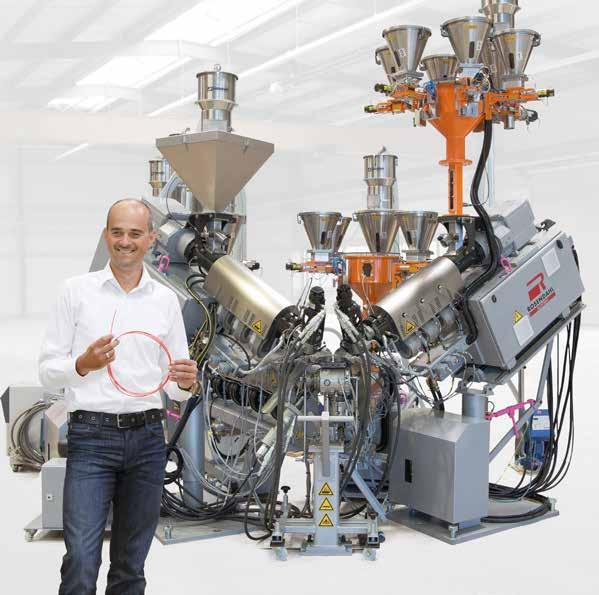


Have you ever noticed that the longer we live in a capital city, the more we feel the city is gradually shrinking and becoming more cramped over time? One reason for this is the allure of urban society, filled with conveniences, modernity, and job opportunities, which attracts a large influx of people. Furthermore, changes in global society and urban development are also influenced by population size. As the population increases, the trend of city growth correspondingly escalates.
Urbanization:
Megatrend, Urbanism, and Opportunities
Innovative Design
The increase in population gives rise to the megatrend of urbanization, a trend of city expansion expected to grow rapidly in the near future. An increase in per capita income propels this expansion. KPMG International Cooperation, a global business consulting company,
has forecasted that the number of middle-income individuals on each continent will see evident changes in the population income structure by 2030. Specifically, the number of middle-income individuals in Asia may increase from 525 million in 2009 to 3,228 million in 2030. Africa follows, with an expected increase from 181 million in 2009 to 313 million in 2030. Although the income of this population group is not as high as that in Europe and the United States, it contributes to the expansion of urban growth as people move to cities seeking job opportunities typically offered by large businesses. Subsequently, they move to settle in these locations for convenience.
So, how does urbanization affect innovative design? The answer probably lies in the demand for infrastructure and public services that cater to the lifestyle of urban dwellers. Imagine a city densely populated with residents. Such a city would be filled with a wide array of conveniences such as shopping malls, offices,
residences, public transportation systems, and the use of electricity, water, and telecommunication systems. Advancements in technology also promote the transformation of cities, following the footprints of large metropolises towards becoming smart cities that connect people from different towns. Hence, it is likely that in the future, innovations will be invented to accommodate the growth of the new age of cities, responding to the lifestyle of people desiring convenience and improved quality of life.
SCG Chemicals, or SCGC, a leading integrated chemical player in the region, keeps pace with every megatrend, especially urbanization. We have production bases throughout the ASEAN region, with a combined population of approximately 661 million. These countries tend to grow due to factors supporting the expansion of the middle class and city growth. Furthermore, SCGC continuously innovates, develops, and designs innovations that support the increasing demand for infrastructure.
Innovative Solutions to Urbanization from SCGC
An interesting innovation from SCGC is fire-resistant plastic cable jackets. This innovation, resulting from research and development in collaboration with business partners, aims to address the issue of fiber-optic cable fires, which often spread widely from the plastic materials wrapping conventional cables. With SCGC’s proprietary technology, this problem can be solved by developing a plastic that can resist fire and is lighter in weight, reducing the potential dangers of cable fires.
But that is not all. SCGC has also designed a high-density polyethylene (HDPE) plastic innovation for high-pressure pipes, revolutionizing pipe installation with the trenchless method. This is suitable for infrastructure system work, helping to reduce the problem of laying pipes in cities which often involves road digging and ground-breaking. It is the first in the ASEAN region to be certified by the European Standard EN 1555-1.
How will the world change as cities transform?
Urbanization growth can be measured by the increasing population influx into urban areas. It was once predicted that by 2030, over 61% of the world’s economic drivers would originate from activities in about 750 major cities, constituting 22% of the world’s total cities. PwC estimates that by 2050, the proportion of the population living in cities will be around 72%, a rise from the current 50%. This surge is partially due to the economic expansion in these major cities.
The rapidly growing economy draws people to migrate to large cities, gradually transforming the surrounding areas into urban zones where the resident population enjoys better income and increased spending power. This transformation lures businesses to invest in these areas, creating jobs and further stimulating the economy. However, the downside of this urbanization trend includes accompanying issues such as overcrowding, resource scarcity, pollution, the cost of living, and inequality between city dwellers and rural folks.
As urbanization presents both opportunities and a myriad of problems, the concept of “sustainable urbanization” starts to play a more significant role. Sustainable urbanization does not focus solely on economic growth and urban transformation towards prosperity but also prioritizes social and environmental aspects to enhance people’s quality of life and readiness for potential future changes. Examples of this transition towards sustainable urbanization include efficient energy use, promoting the grassroots economy by distributing income to distant localities, and planning to address problems that are likely to arise from city expansion, such as city planning, traffic management, waste problems, and pollution issues.
As the world’s population continues to seek opportunities and improved quality of life, the constricted urban society must expand to accommodate people continuously. At the same time, it provides an opportunity to create innovations that support the urbanization megatrend, making it even better, more advanced, and continuously evolving. From now on, we are likely to see the design of innovations that are beneficial for all lives and ready for sustainable urbanization.
For more information, please visit www.scgchemicals.com
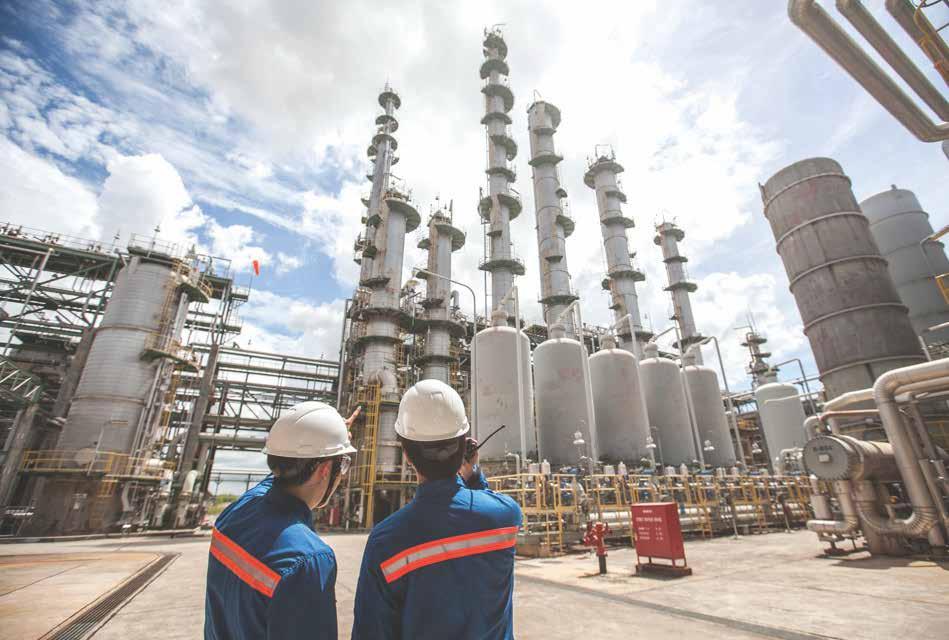
Sheffield based wire manufacturer
WintWire Ltd has expanded with the acquisition of its close rivals Firebird Metals for an undisclosed sum, a company which has traded for over 20 years in Sheffield as a stockholder and trader of nickel alloy and stainless steel precision wire with strong links to leading producers in both the EU and USA.
WintWire Managing Director Ben Turner said: “This acquisition has progressed our growth strategy slightly ahead of schedule and unlocks some fantastic new opportunities, of which is a large amount of wire stocks such as Inconel, Hastelloy, Nimonic and stainless steels. This will vastly increase our product offering; we have listened to our customers who have been looking for an alternative source direct from a manufacturer and acted upon it. Having recently completed the Goldman Sachs 10,000 Small Business Growth Programme the timing couldn’t have been better and with orders in hand totalling more than £1.6M we are on track for a record breaking year.”
Firebird Managing Director Neil Skinner who will initially stay on in an advisory role said “There was no better company to sell our UK business to, this is a fantastic coming together of two businesses which have an incredibly similar ethos. The acquisition will benefit from huge synergies and will support our customers own growth ambitions by creating a market leading stockholder and manufacturing facility under one roof, reducing lead times and increasing product offering.”
The deal creates a territory partnership with French wire stockist AMIC SARL that will enable supply chain integration, combining high levels of stocks with access to WintWire’s extensive wire manufacturing operation, ultimately creating a joint European wire powerhouse.
www.wintwire.co.uk
sales@wintwire.co.uk
+44 (0) 1226 763081
Materials now include: Nickel Alloys , Stainless Steels , Titanium + alloys , Cobalt Alloys. Wire Grades kept in stock - Inc X750, 177PH, Hast C276, Inc 600, MP35N, Elgiloy/Phynox, Nim 90 and many more

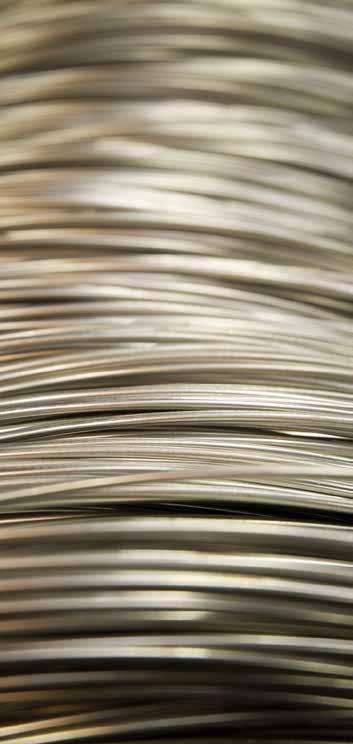
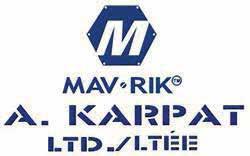






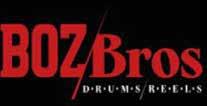


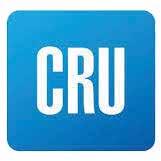
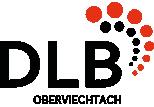



















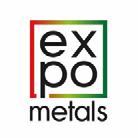

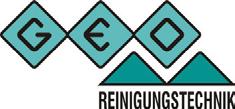
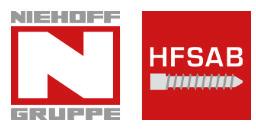
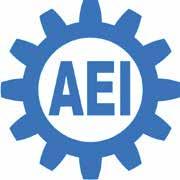






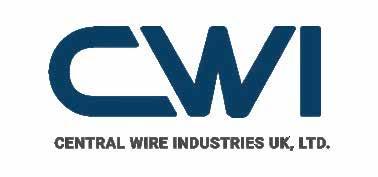



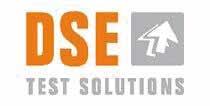








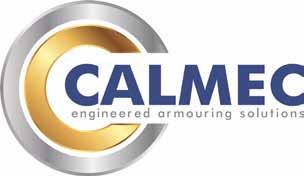
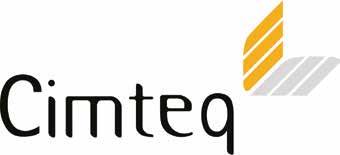





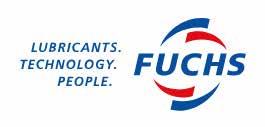
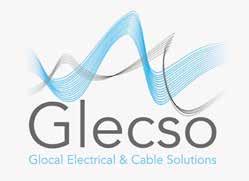

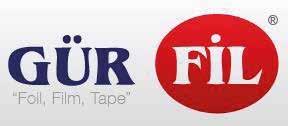


































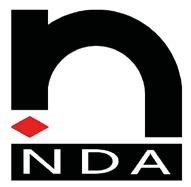

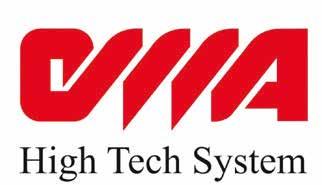












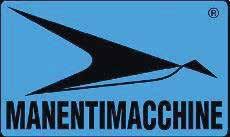
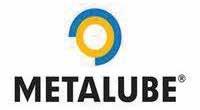
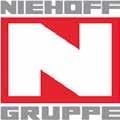




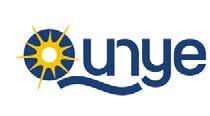


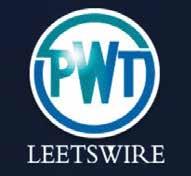




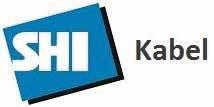













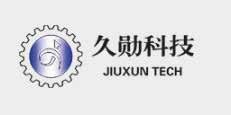









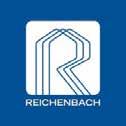













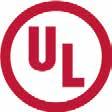


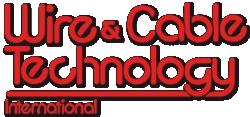









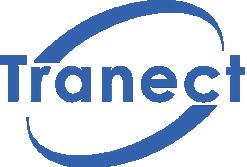
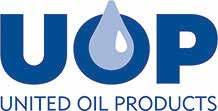













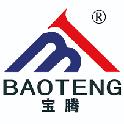
In our continuous effort to enhance your IWMA Membership experience, we wanted to inform you of some changes that will be taking place regarding the invoicing and renewal process for your IWMA Membership.
Starting January 2024, we are transitioning to a new system where all memberships will renew in January of each year. This change aims to streamline our processes and provide a more consistent experience for all members.
Here’s what to expect during this transition:
January Renewals: Memberships with renewal dates in January will remain unaffected. You will have received your renewal invoice in December 2023 as usual.
Renewal Dates February - June 2024: For memberships with renewal dates between February and June
2024, you will receive an invoice for a partial year’s membership. Your new membership period will commence in January 2025.
Renewal Dates July - December 2024: Memberships with renewal dates falling between July and December 2024 will be invoiced for the remainder of 2024 and the full year membership to cover 2025. Your next renewal will occur in January 2026.
We value your ongoing support as a member of IWMA and we understand that these changes may require some adaptation, however we want to assure you that we are available to address any questions or concerns you might have regarding your membership renewal.
If you have any queries at all or need further clarification, please don’t hesitate to contact us at info@iwma.org
Thank you for your understanding.


